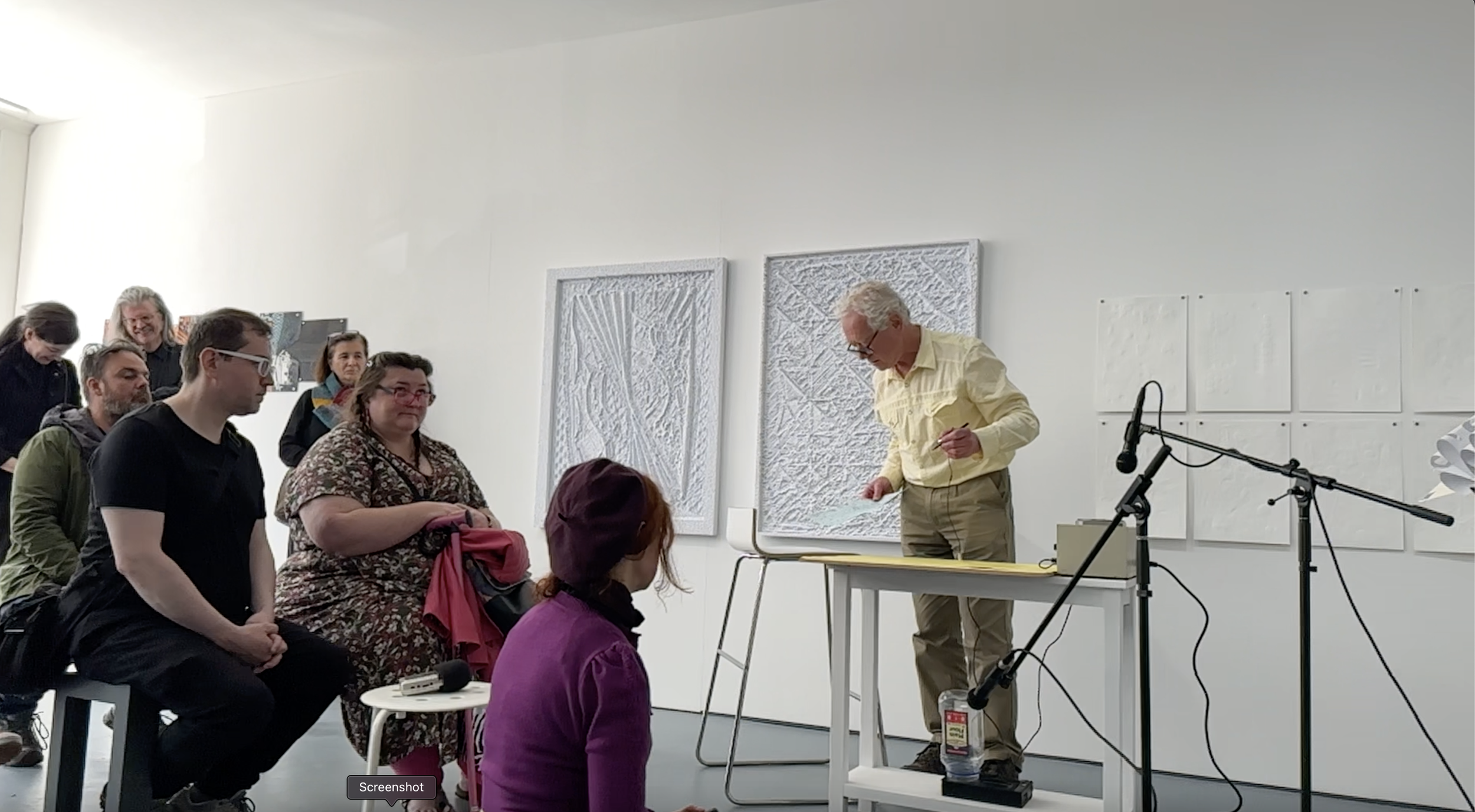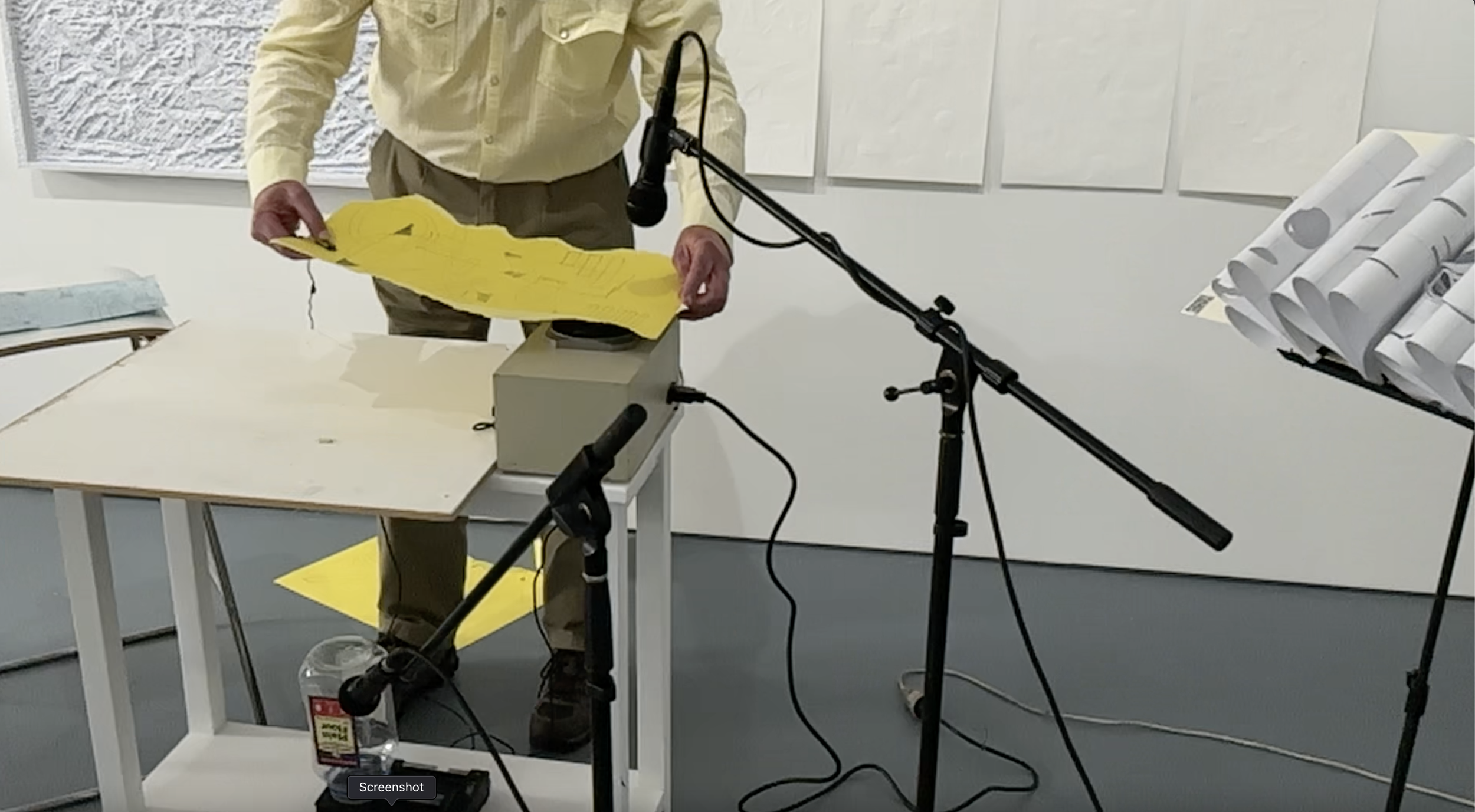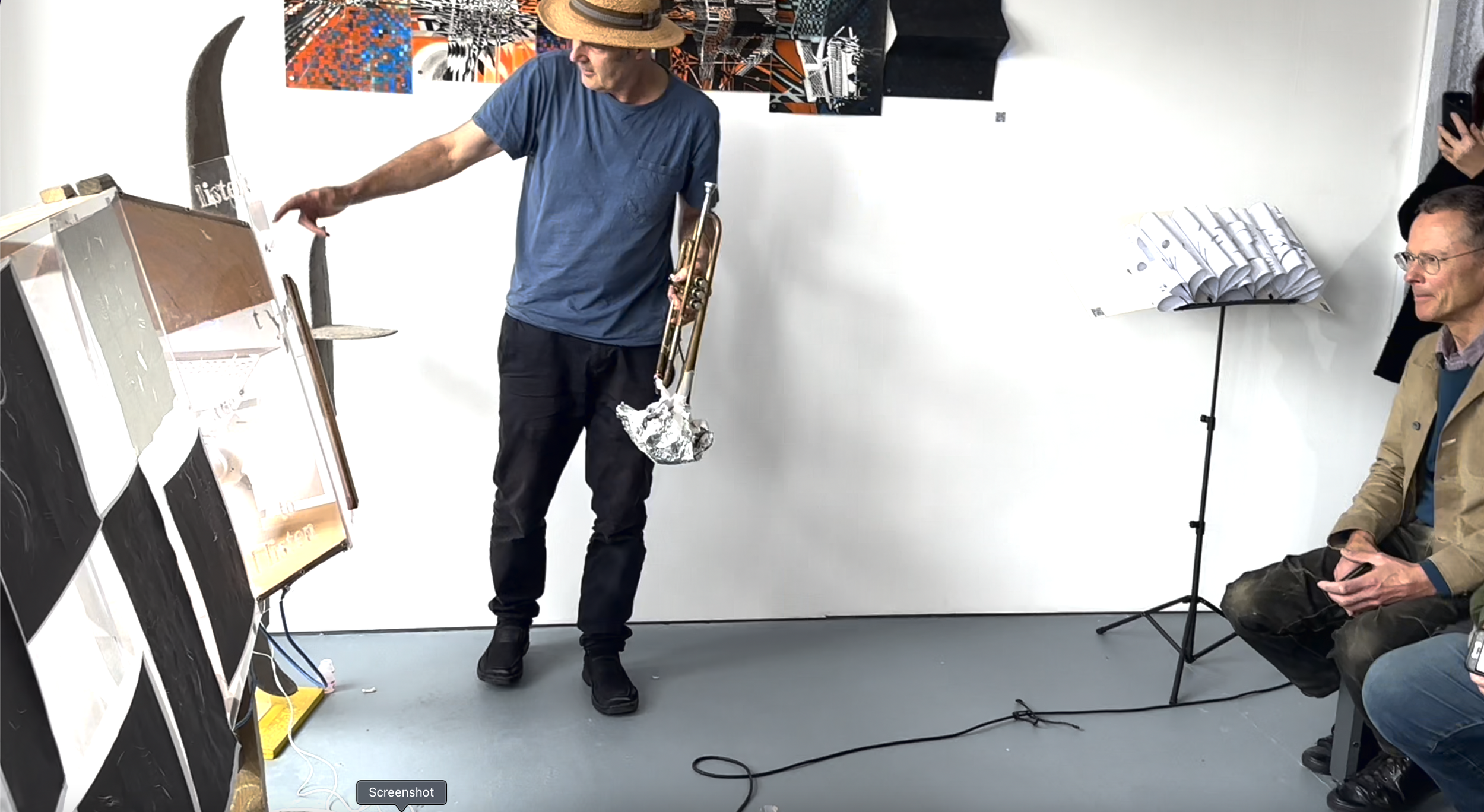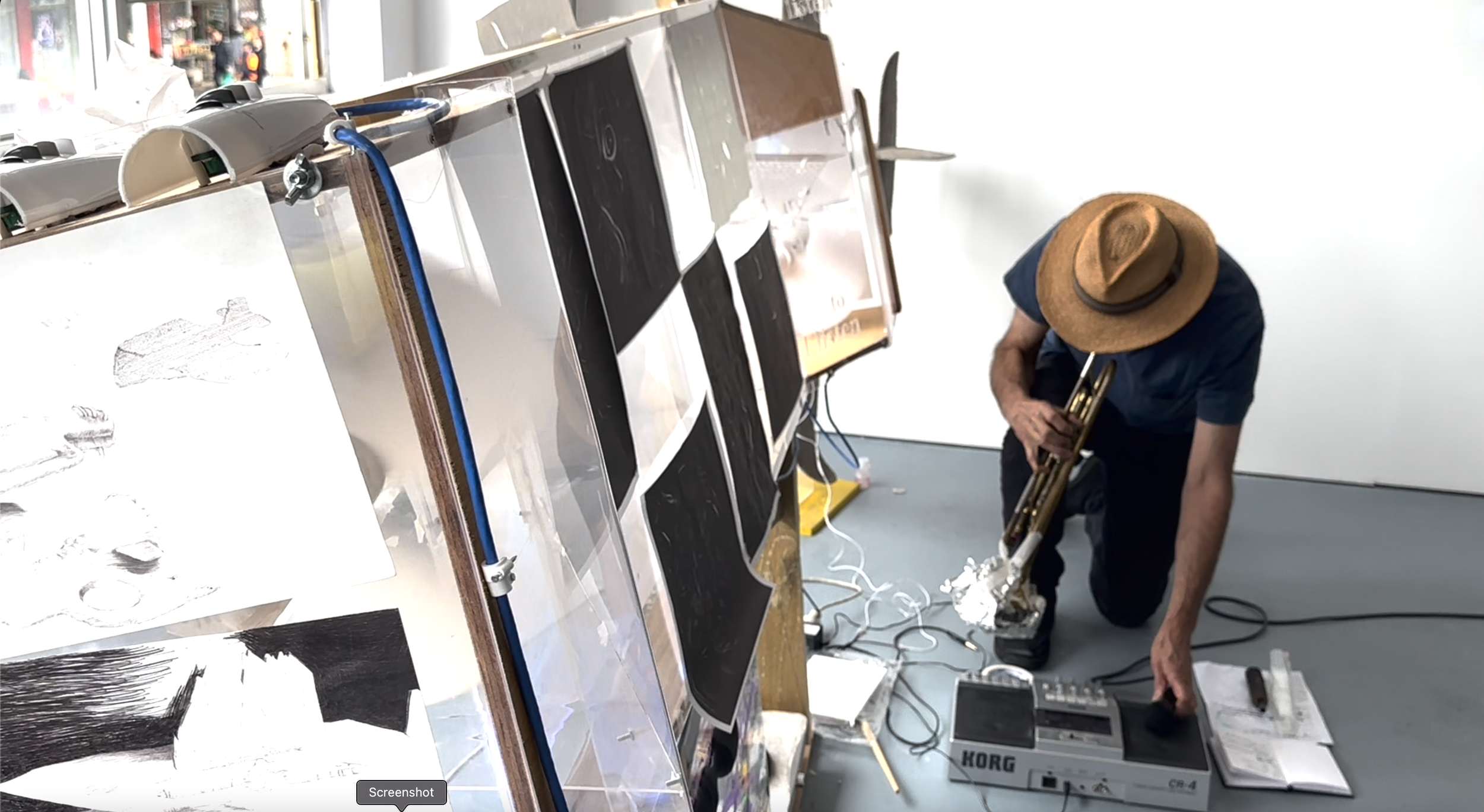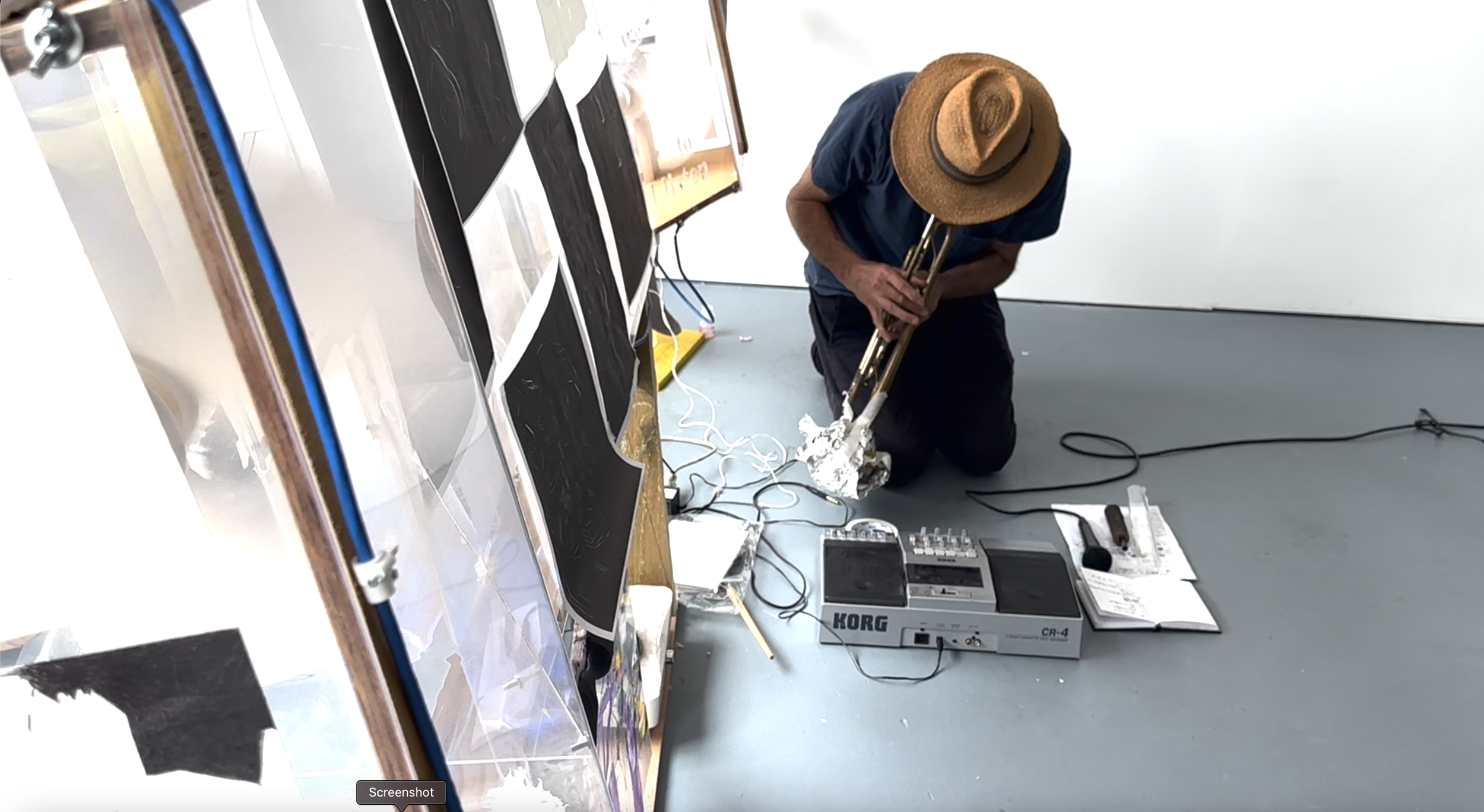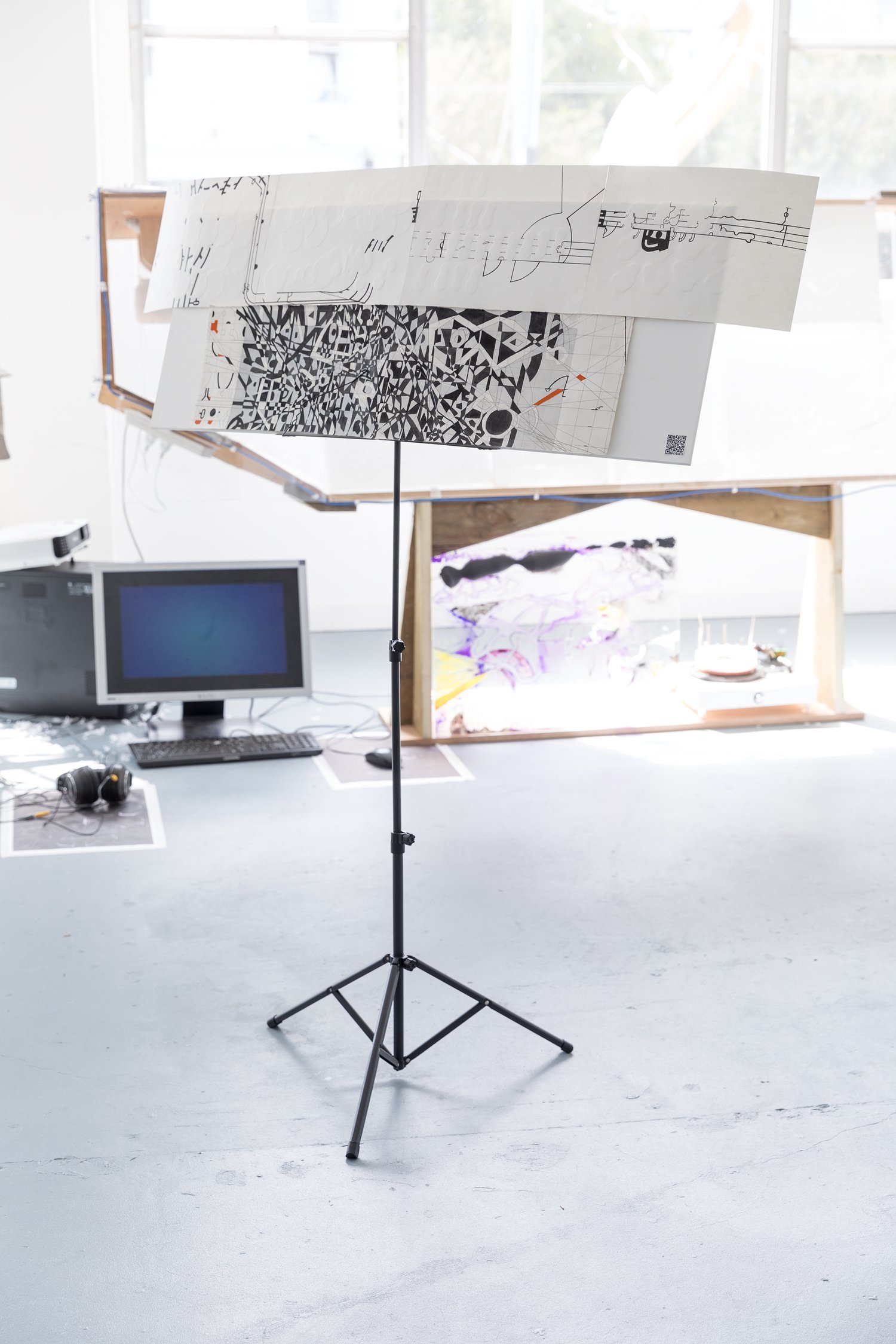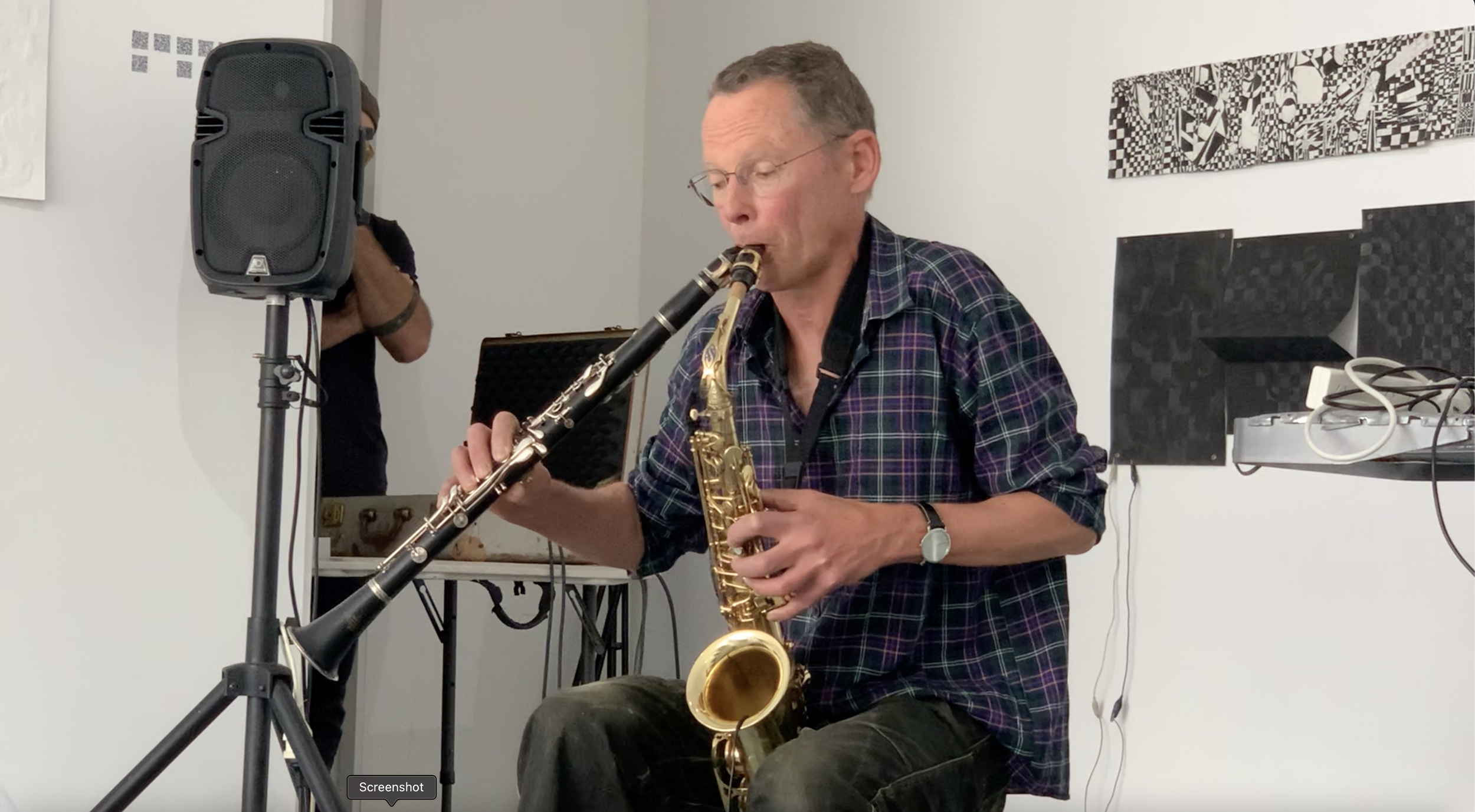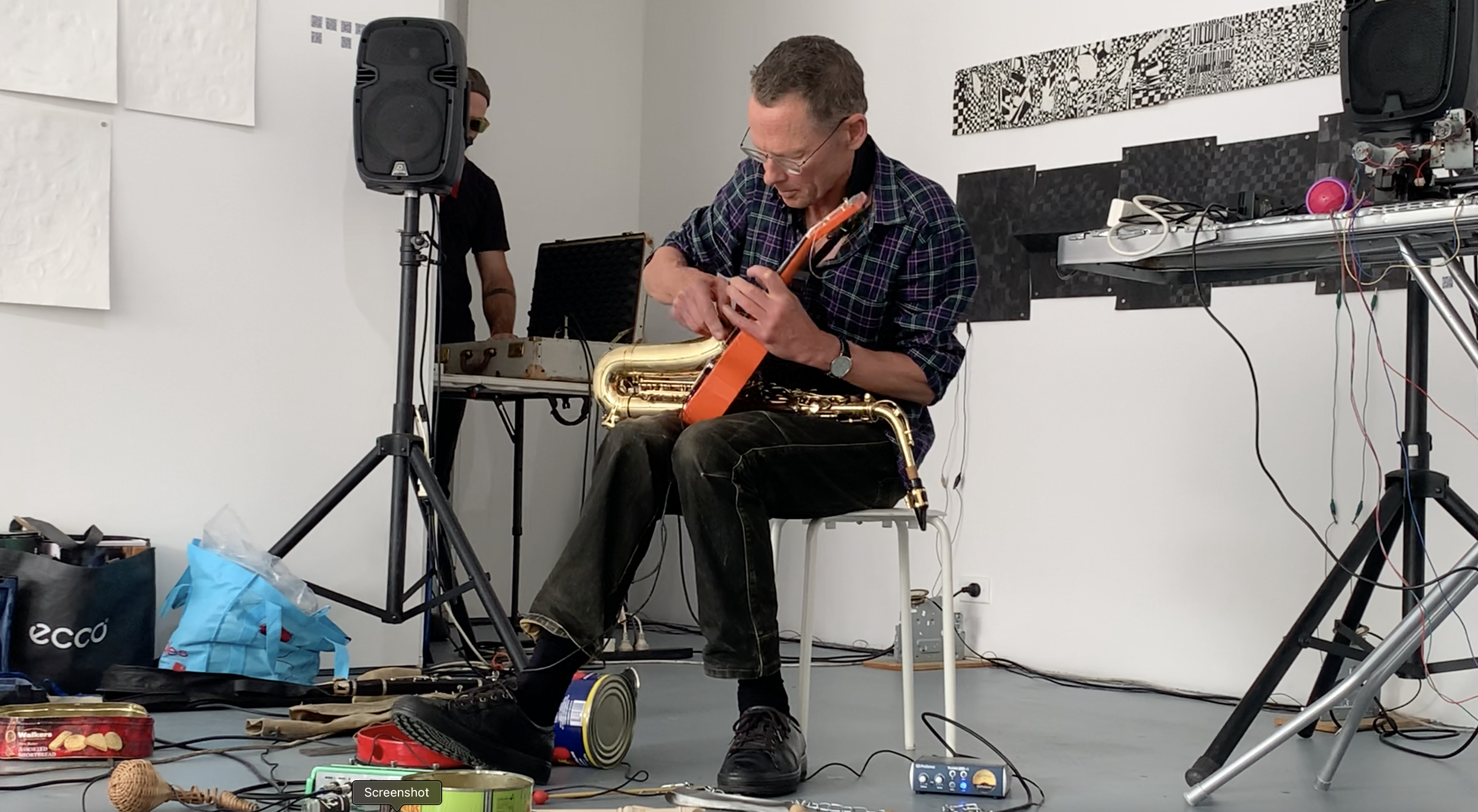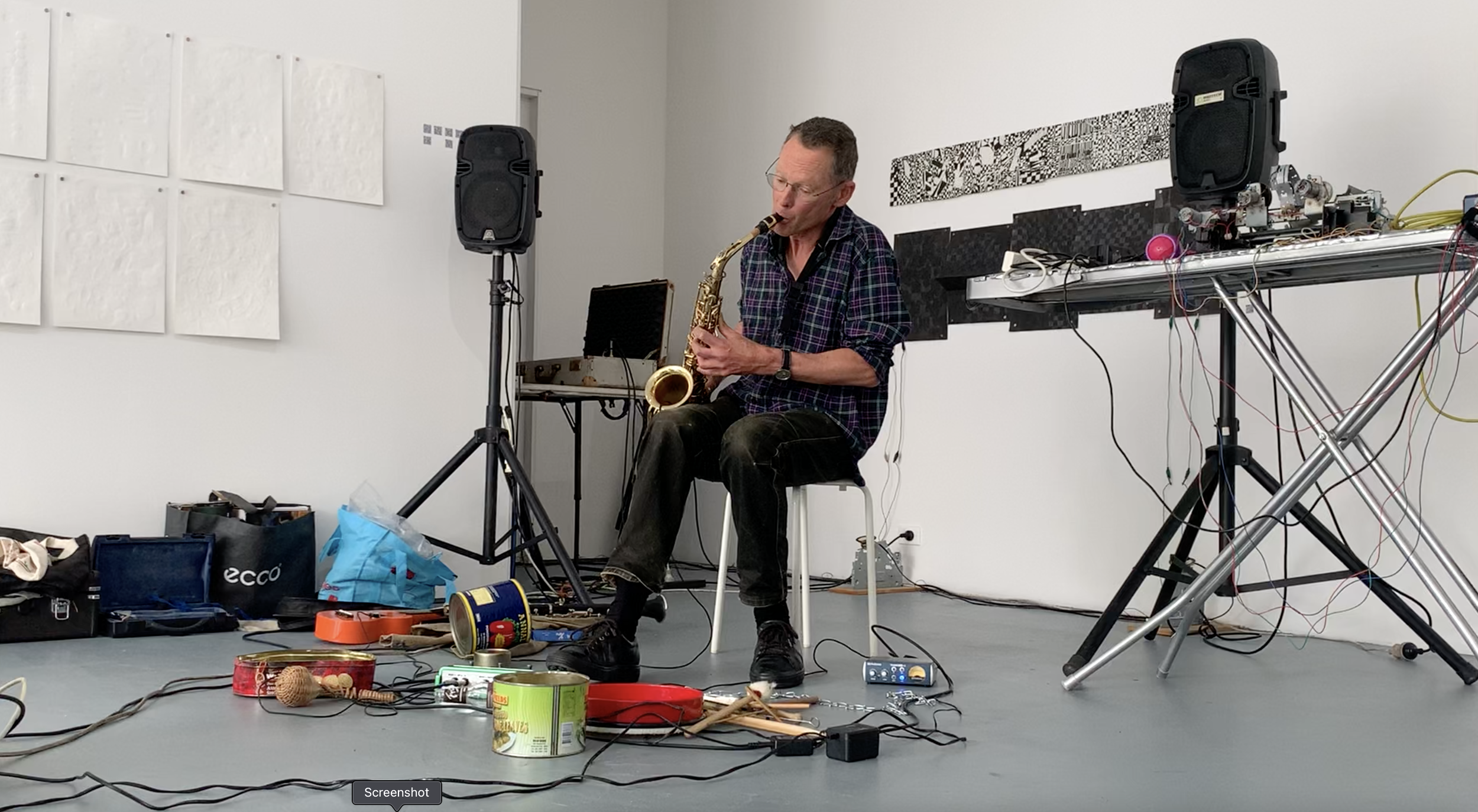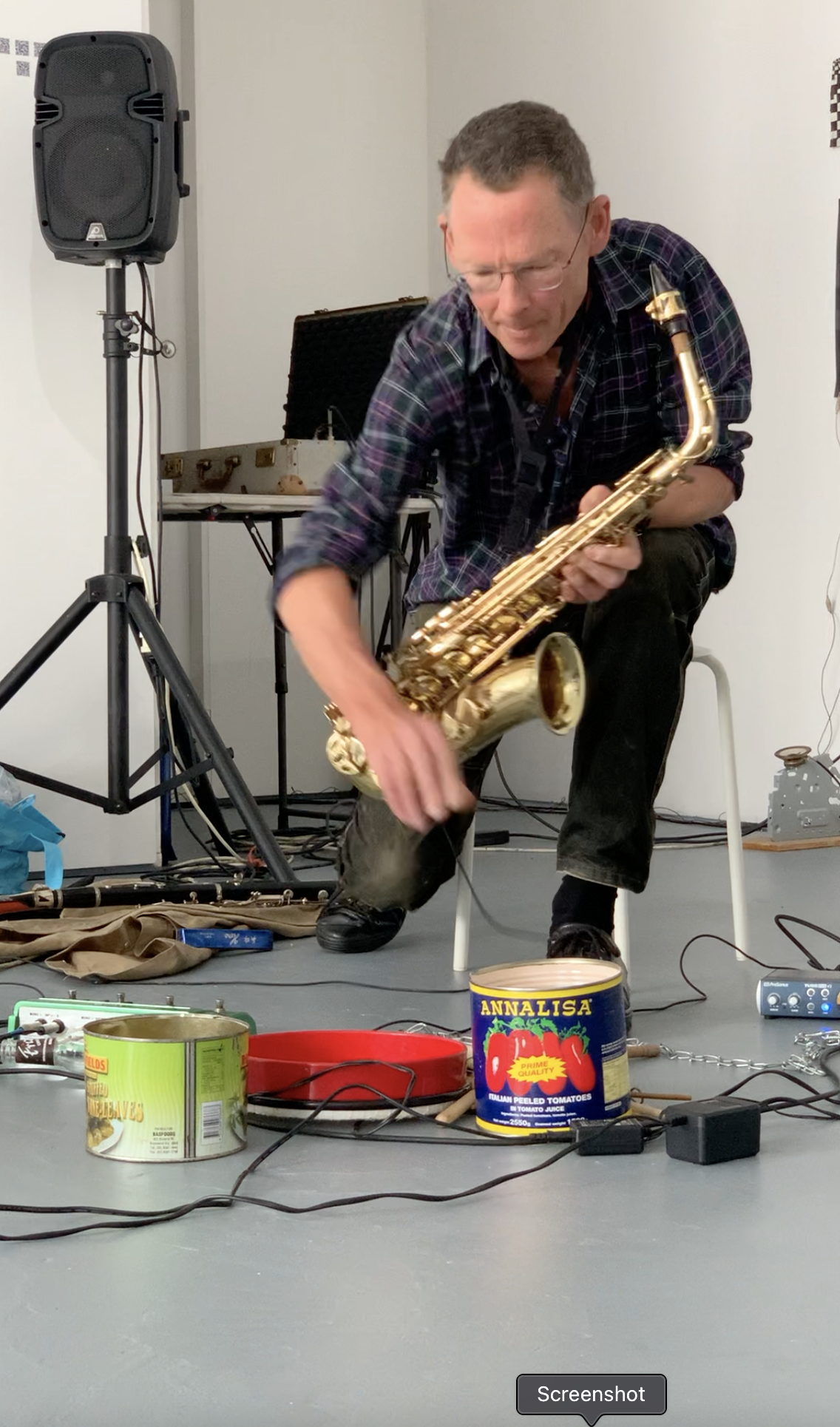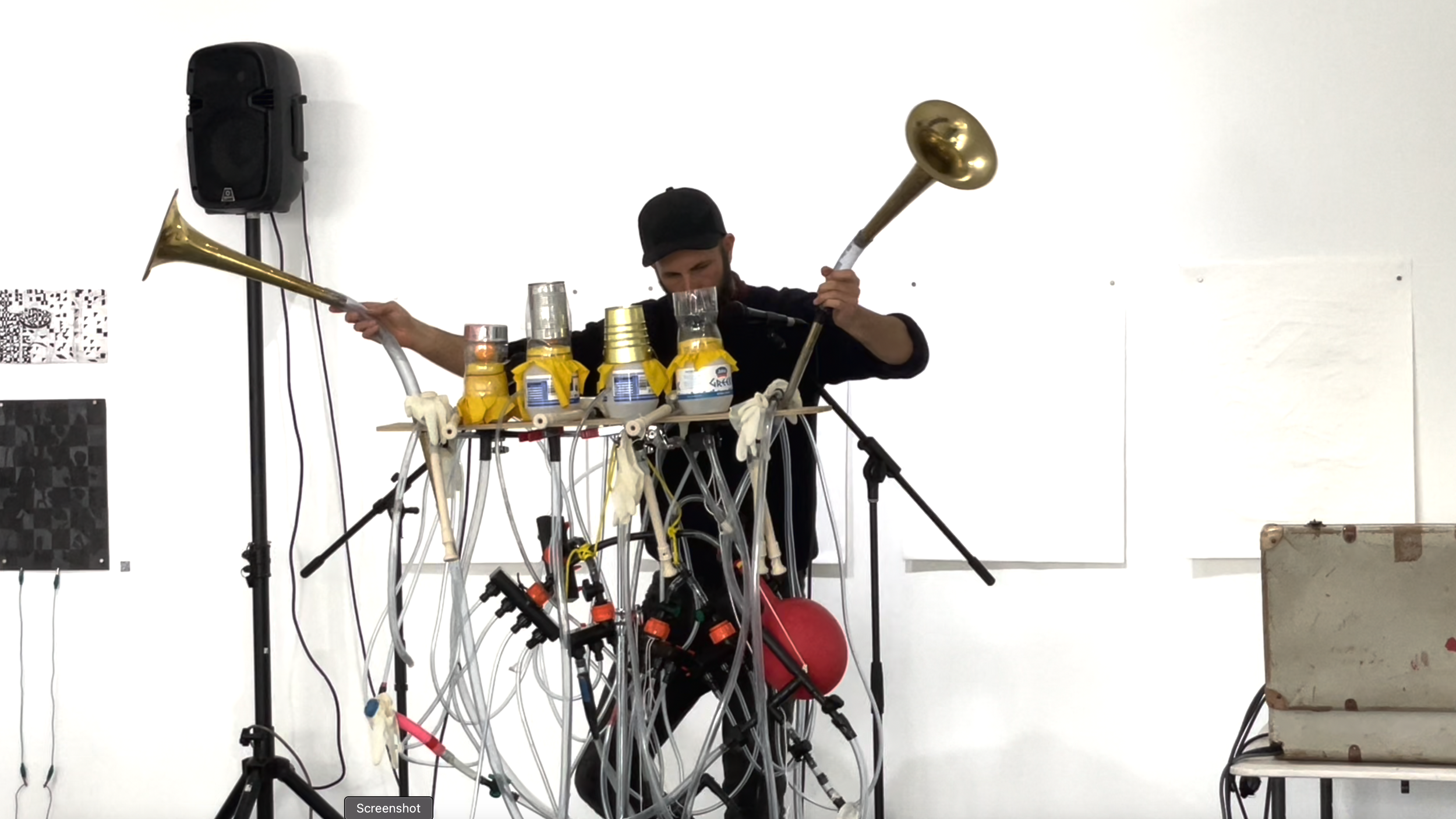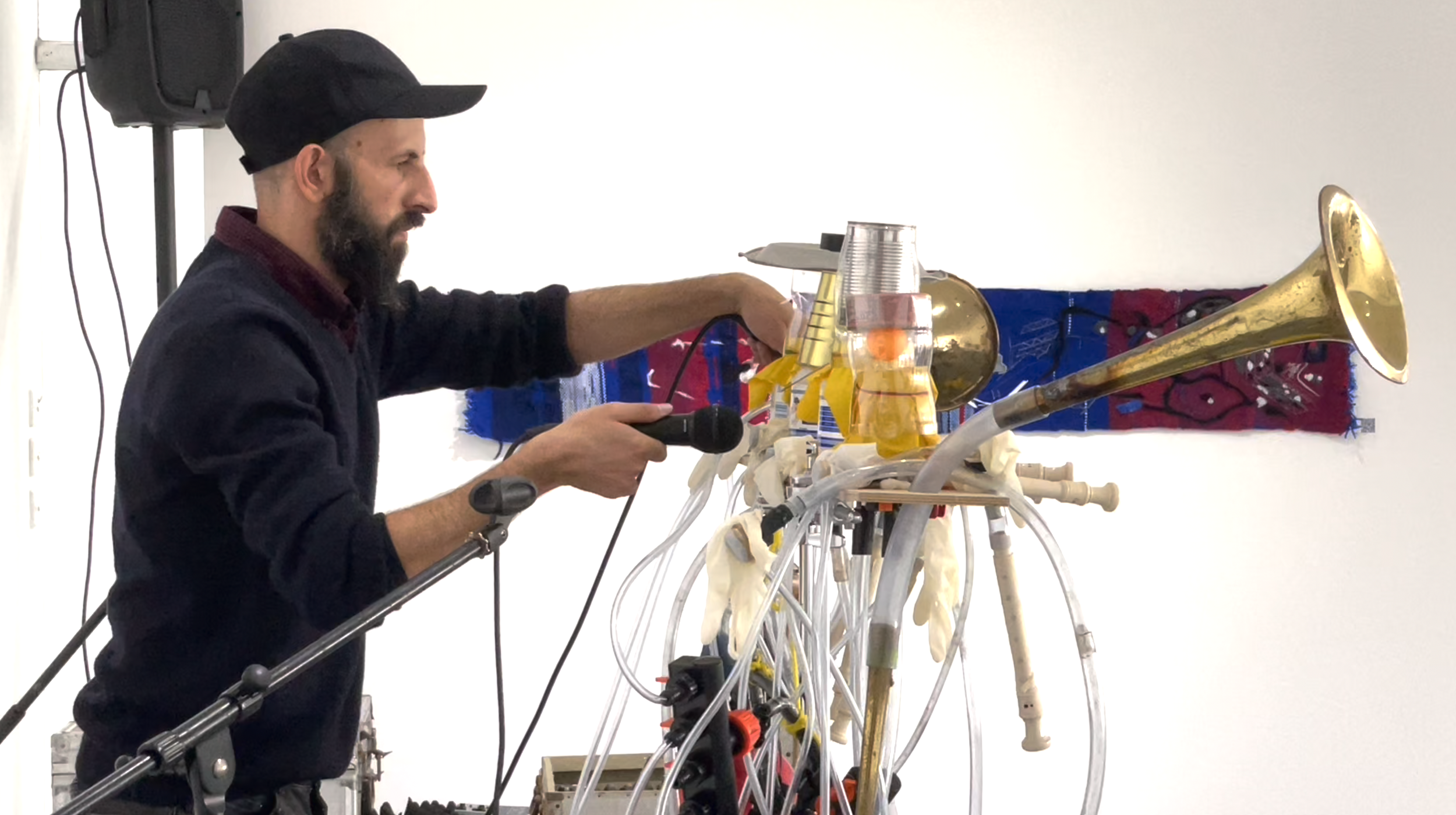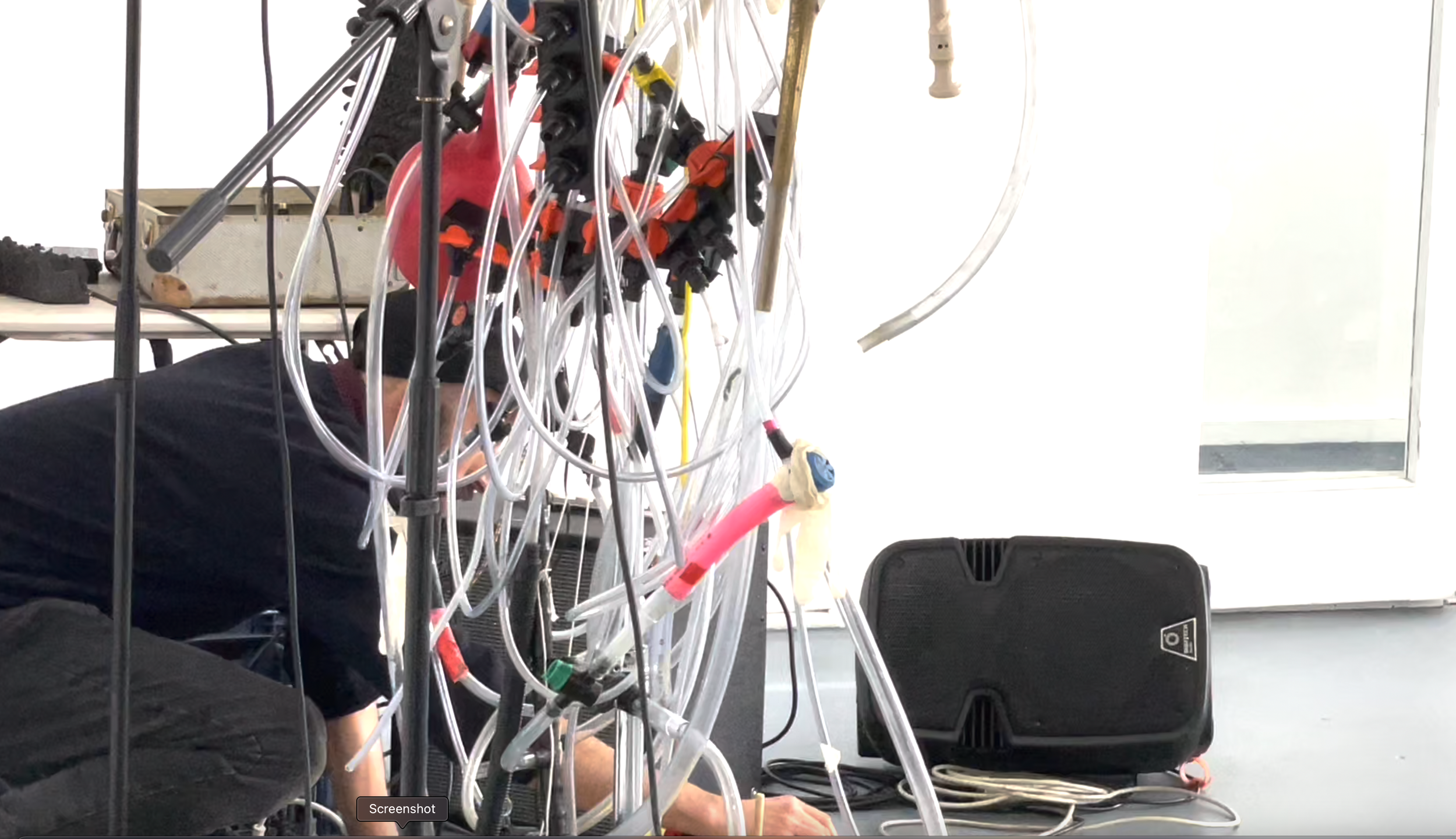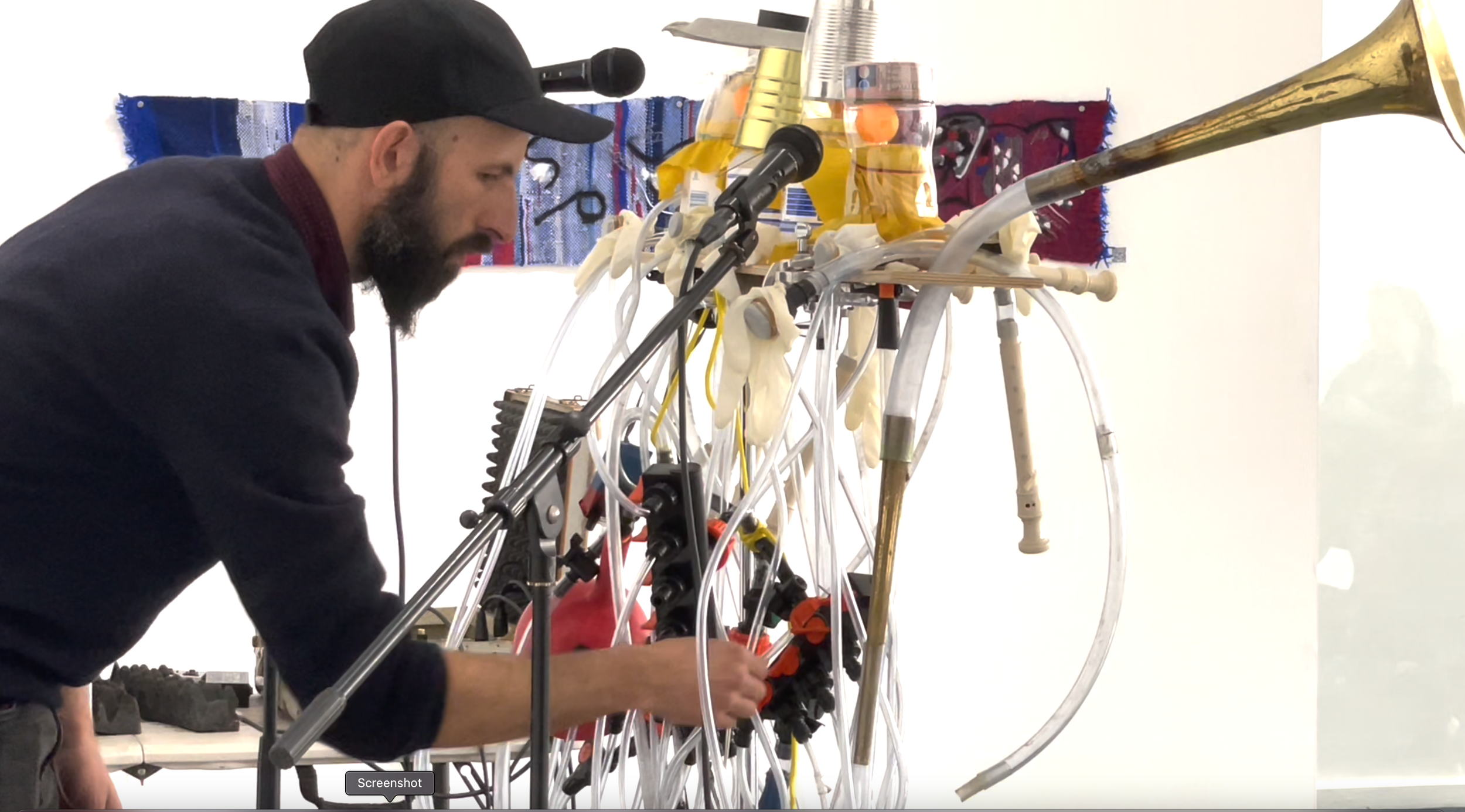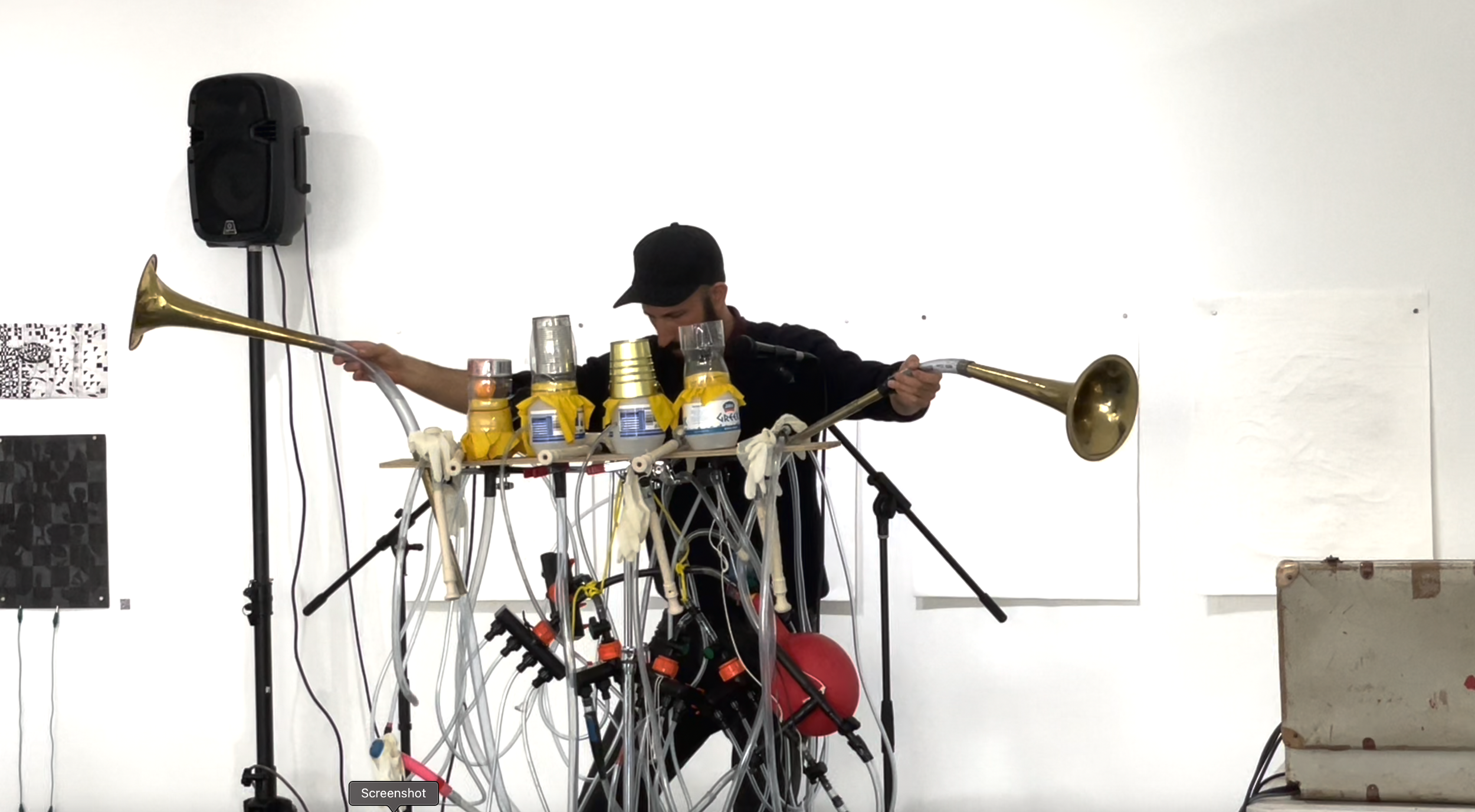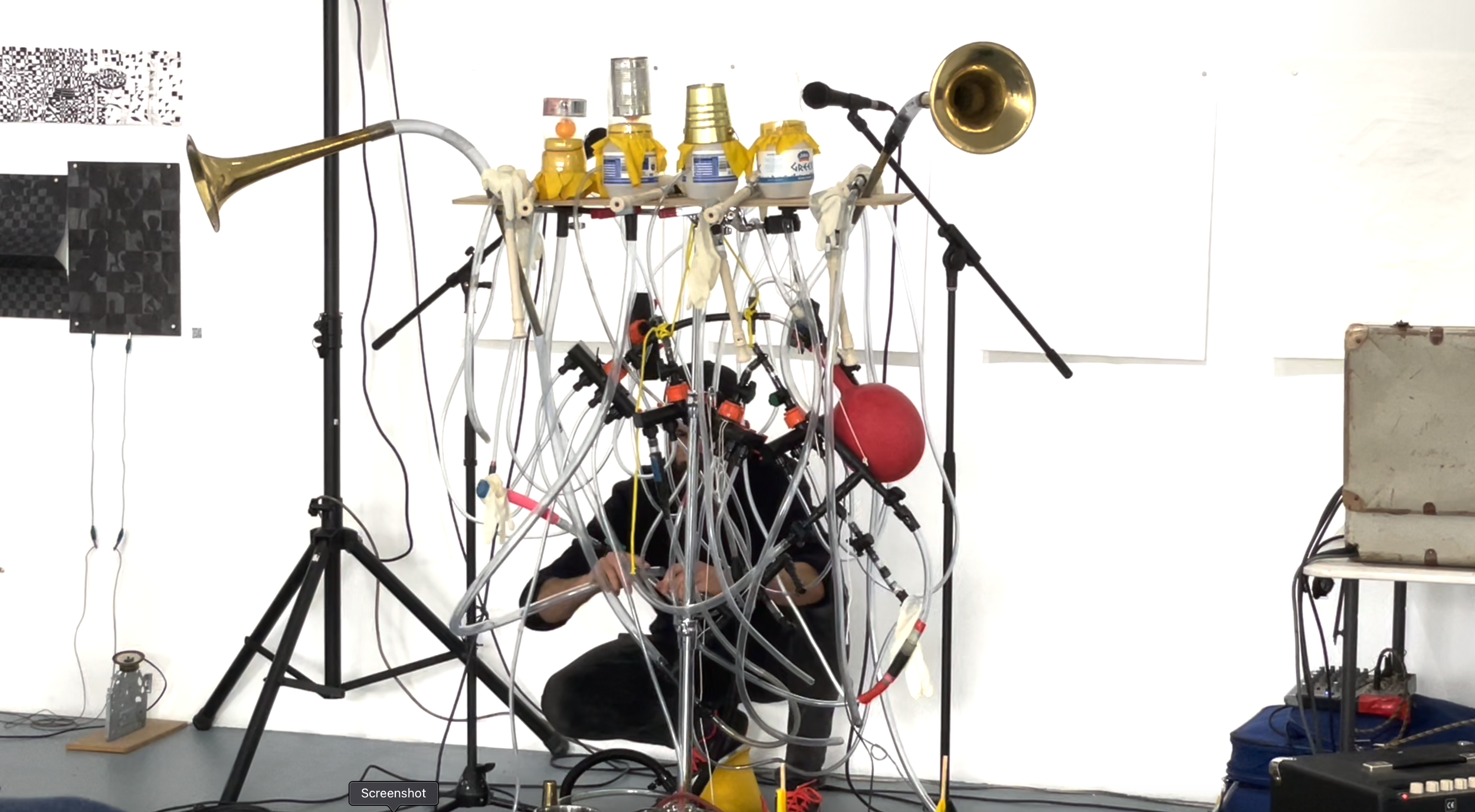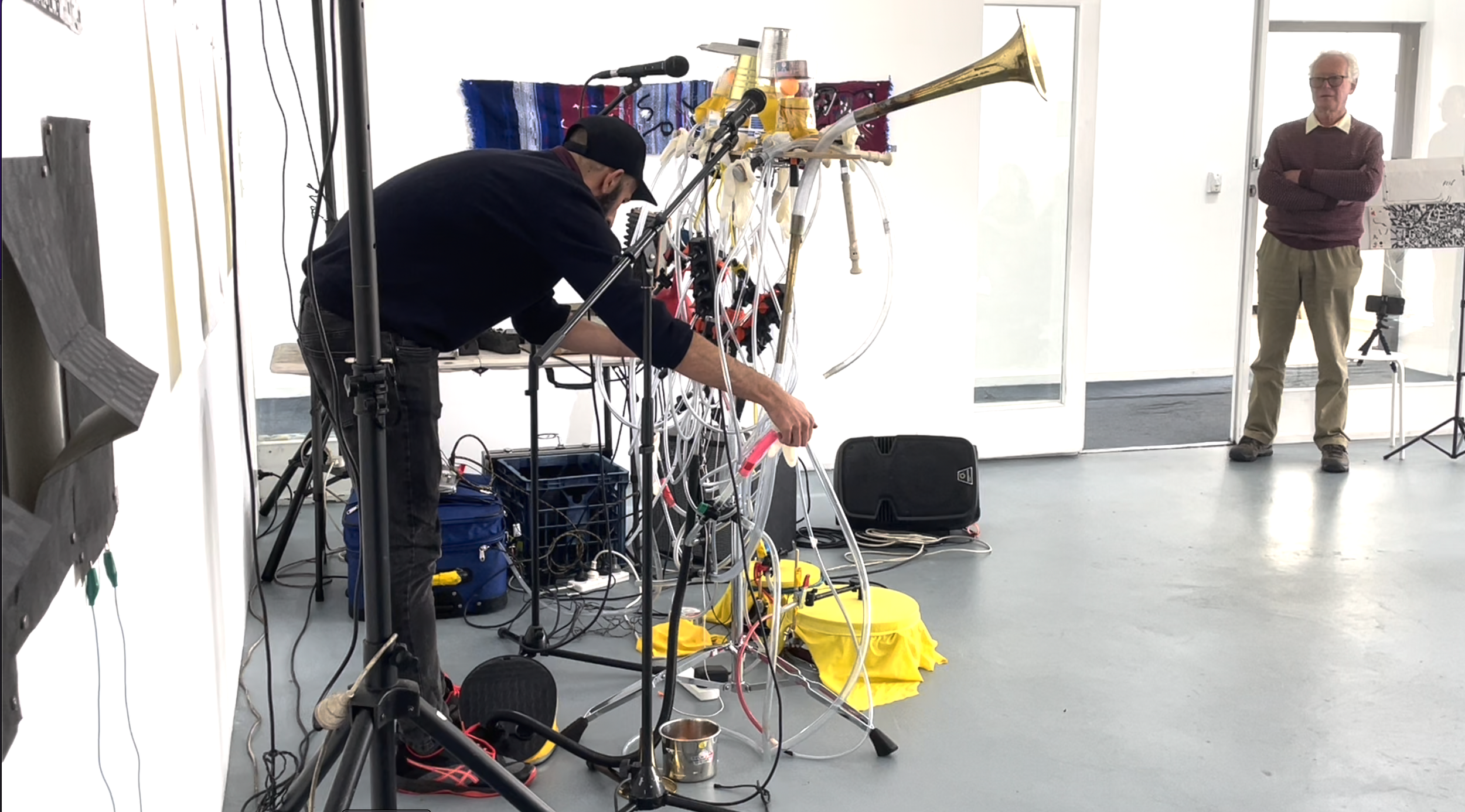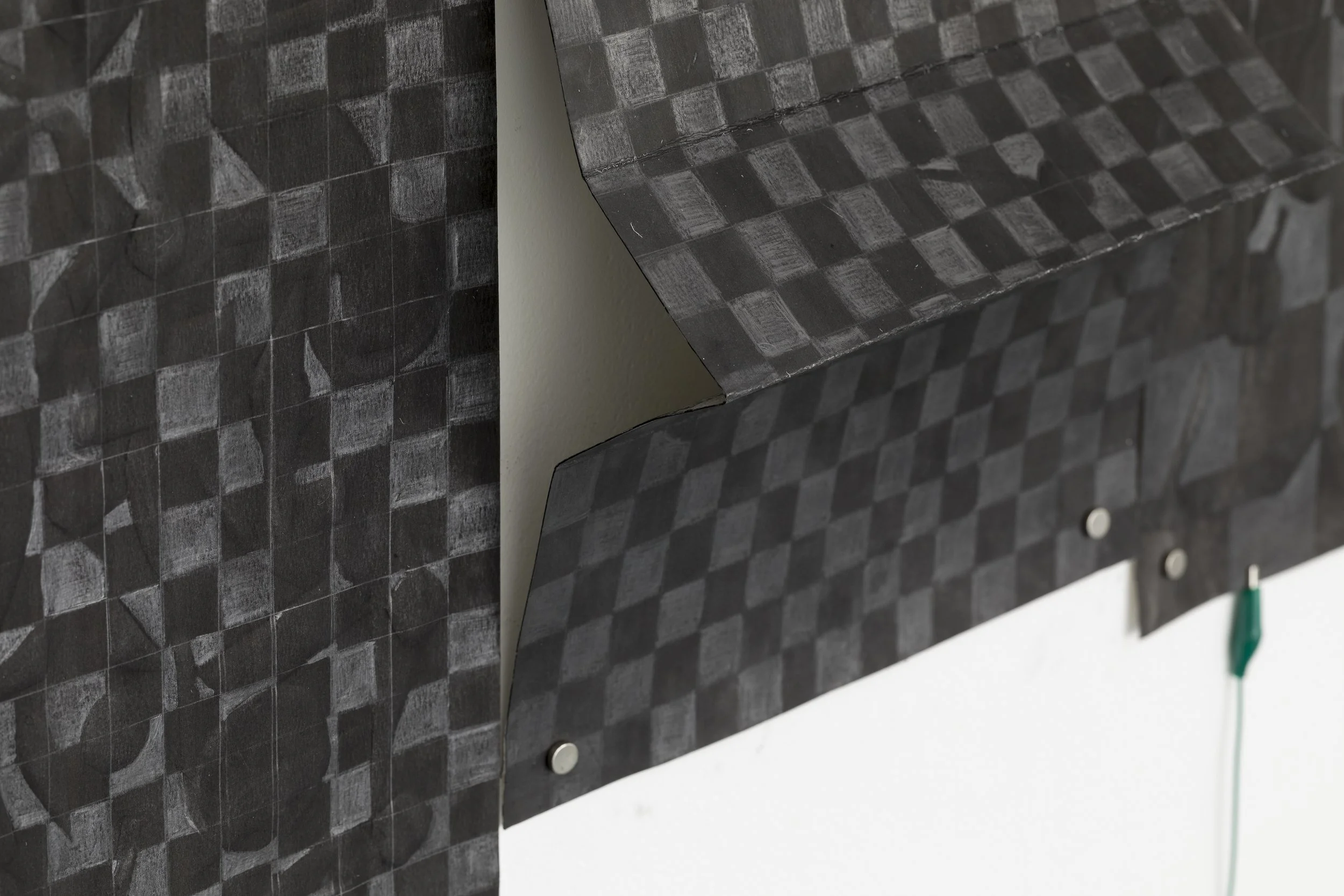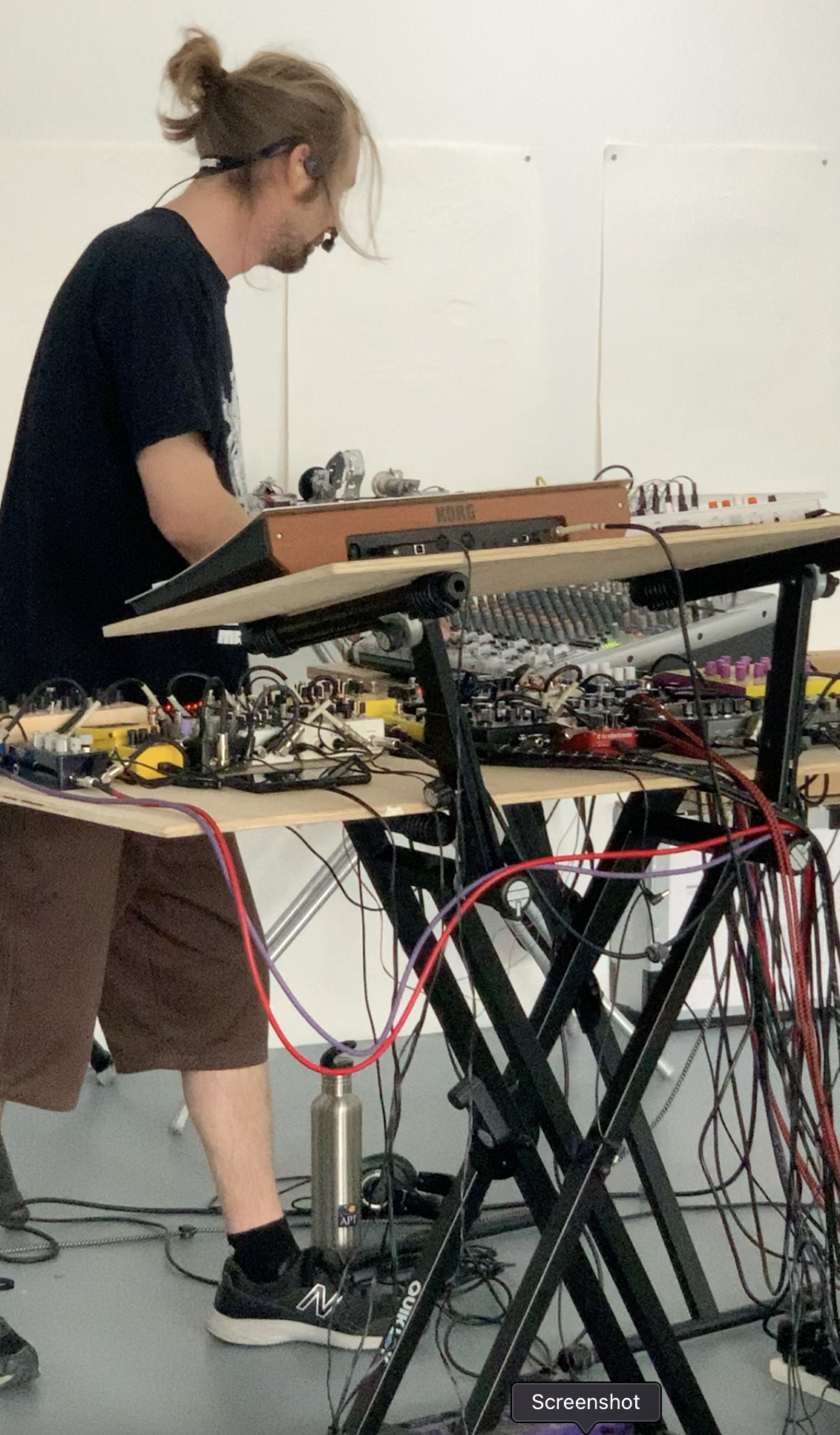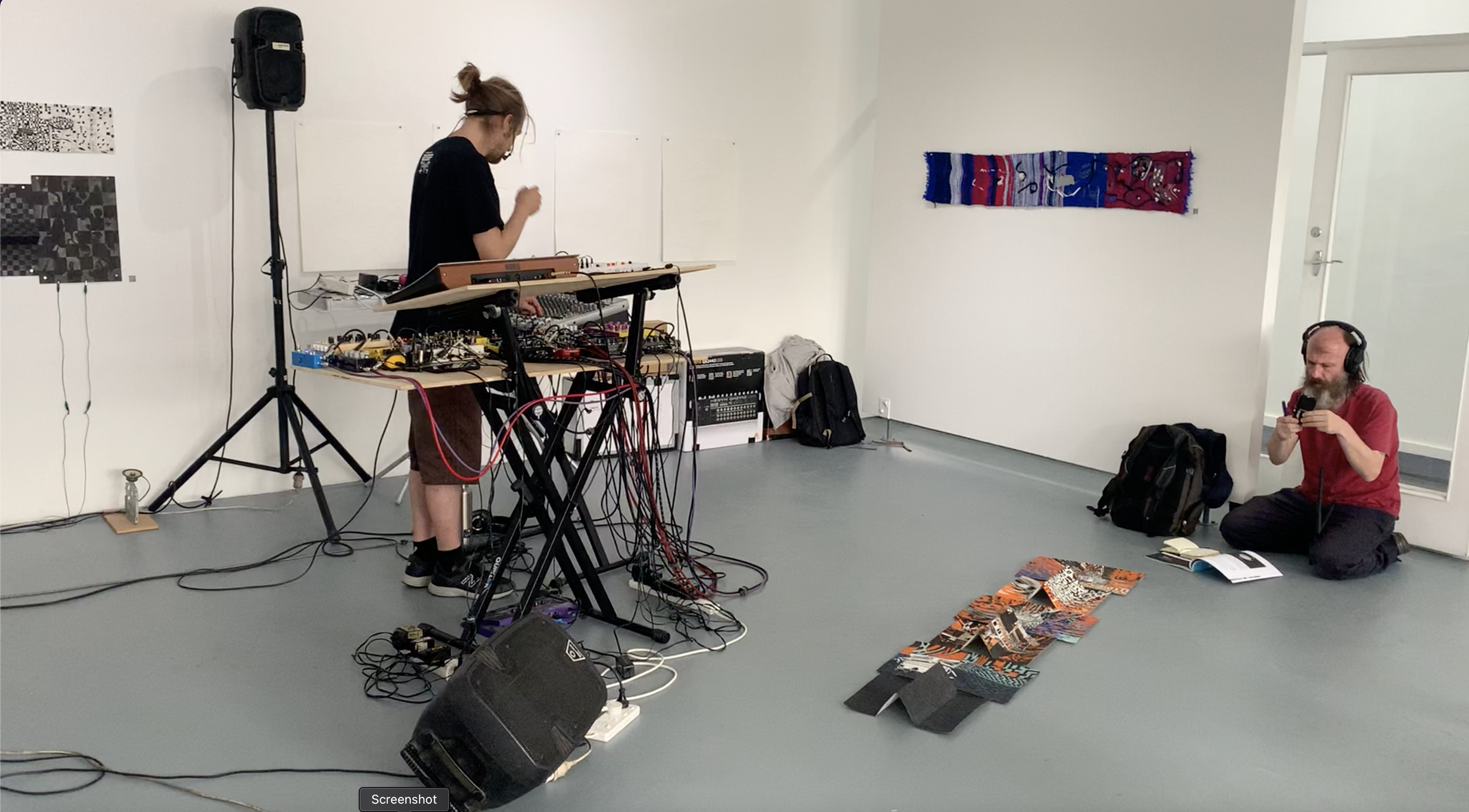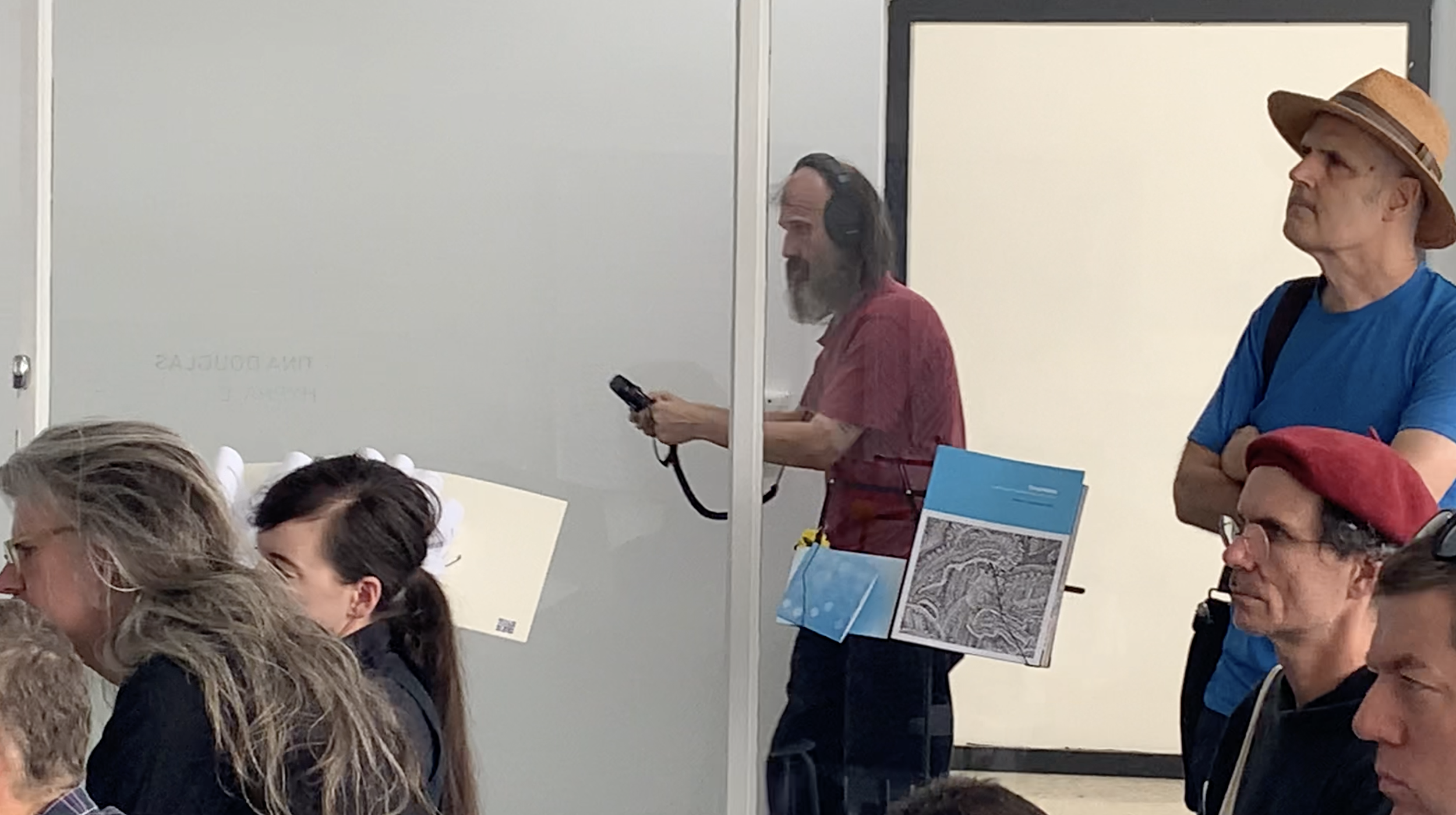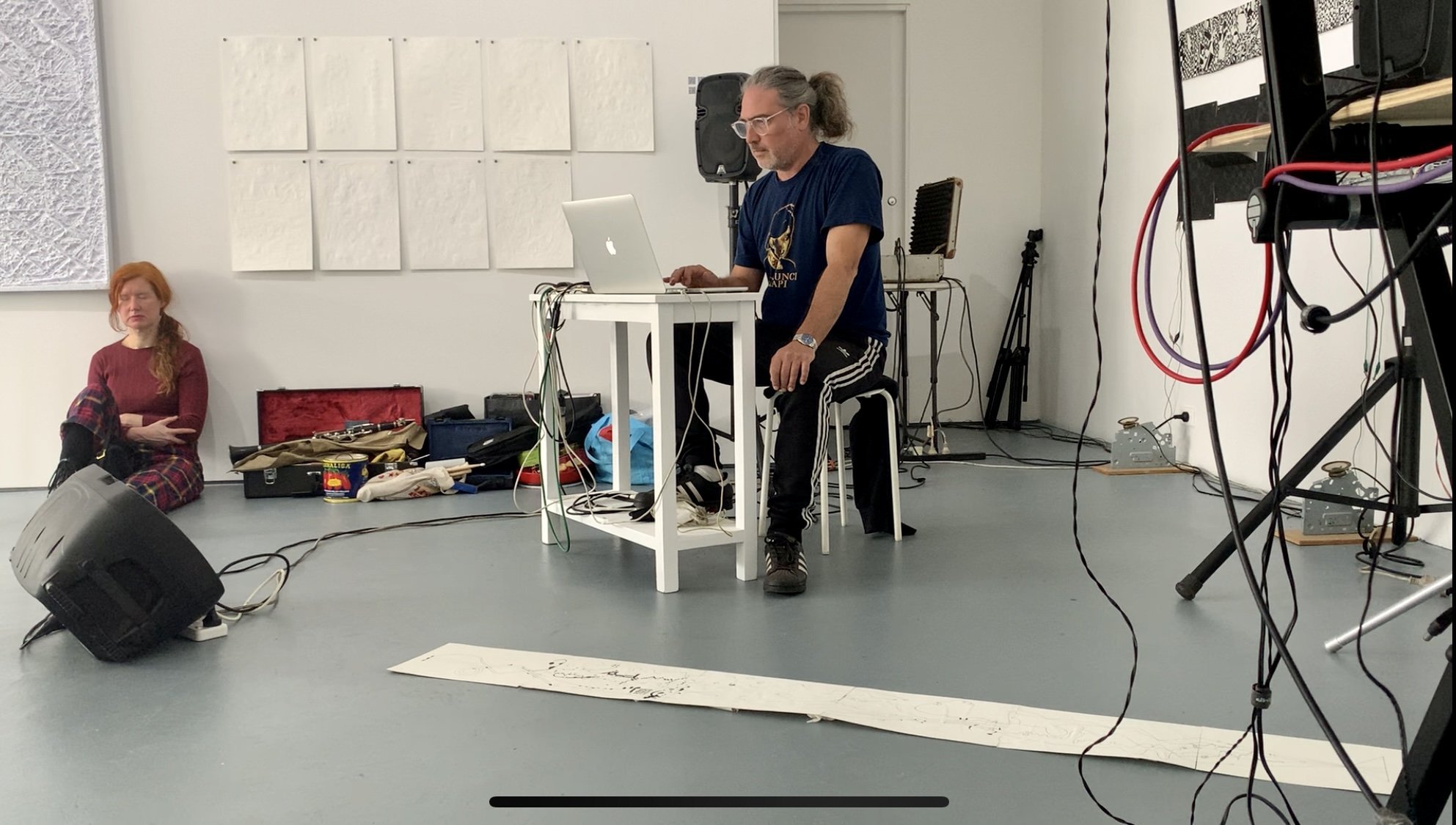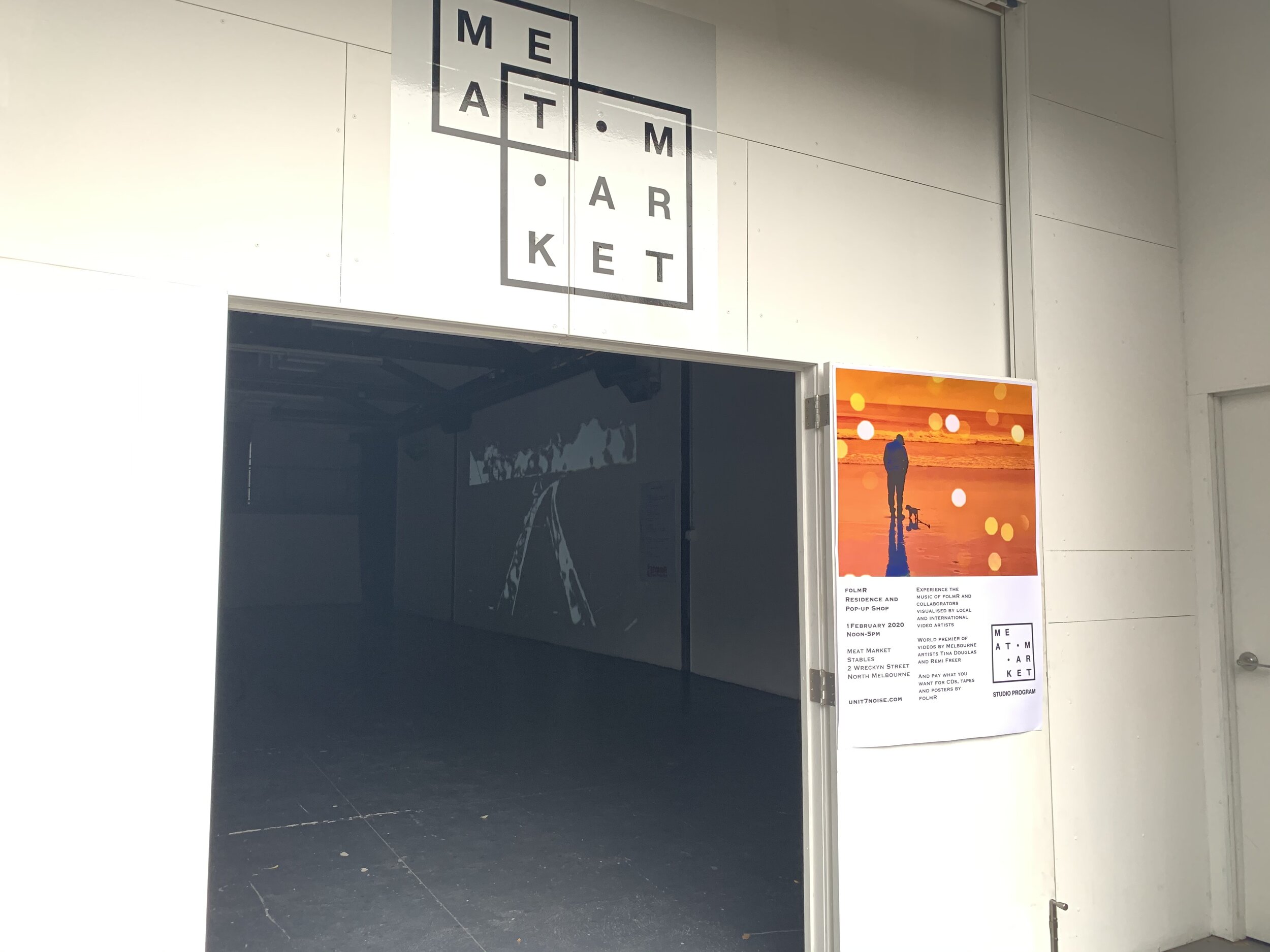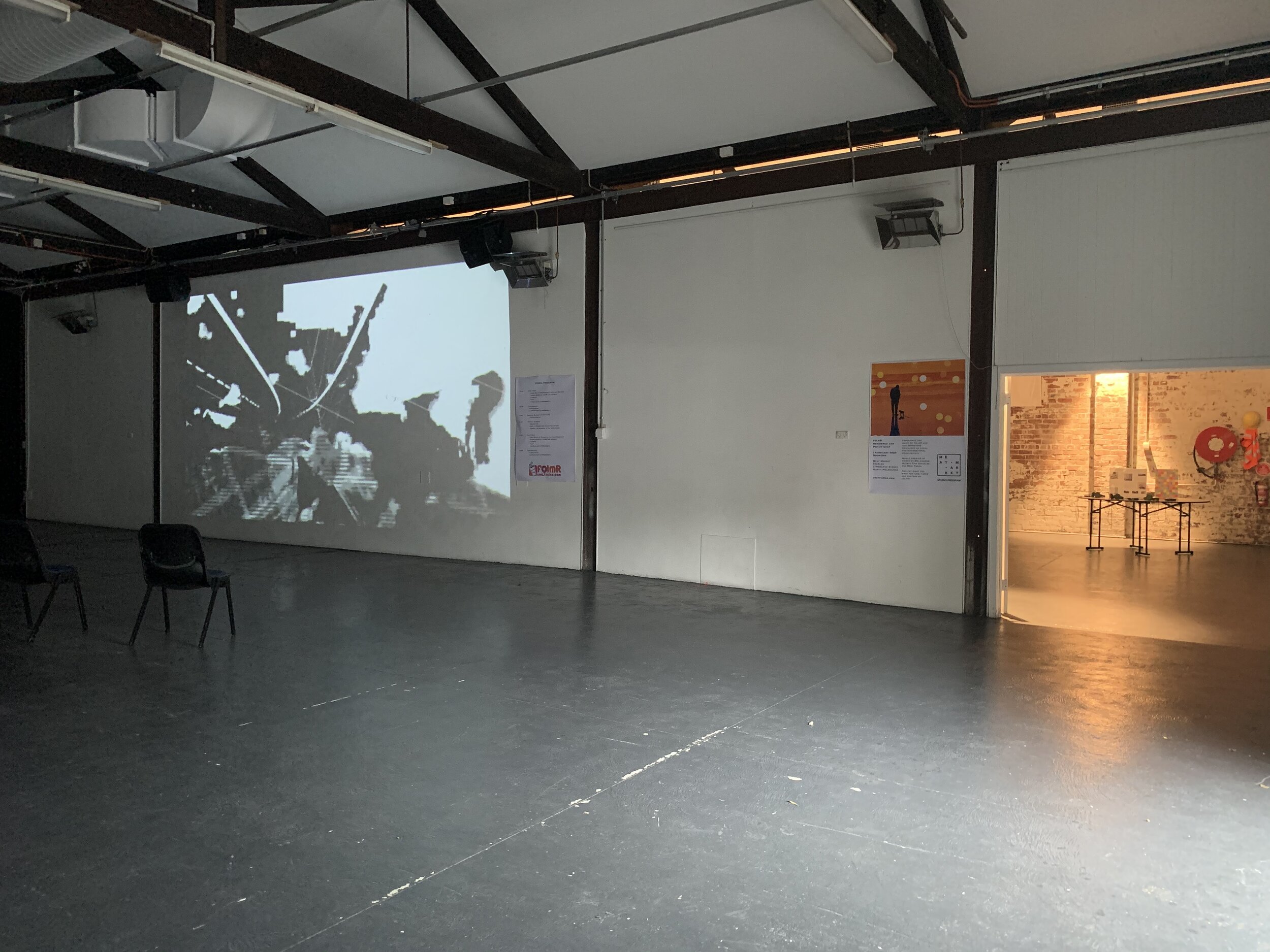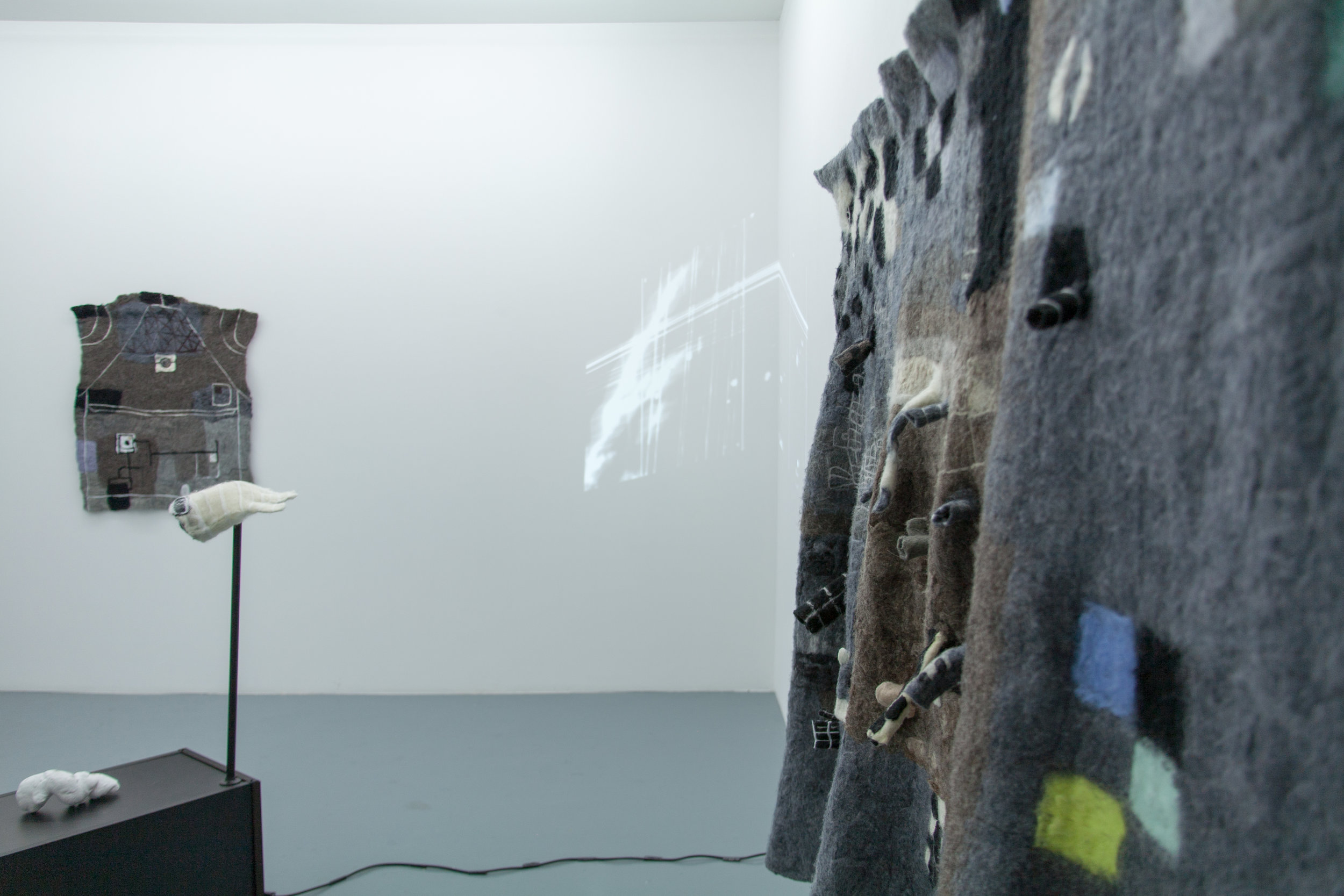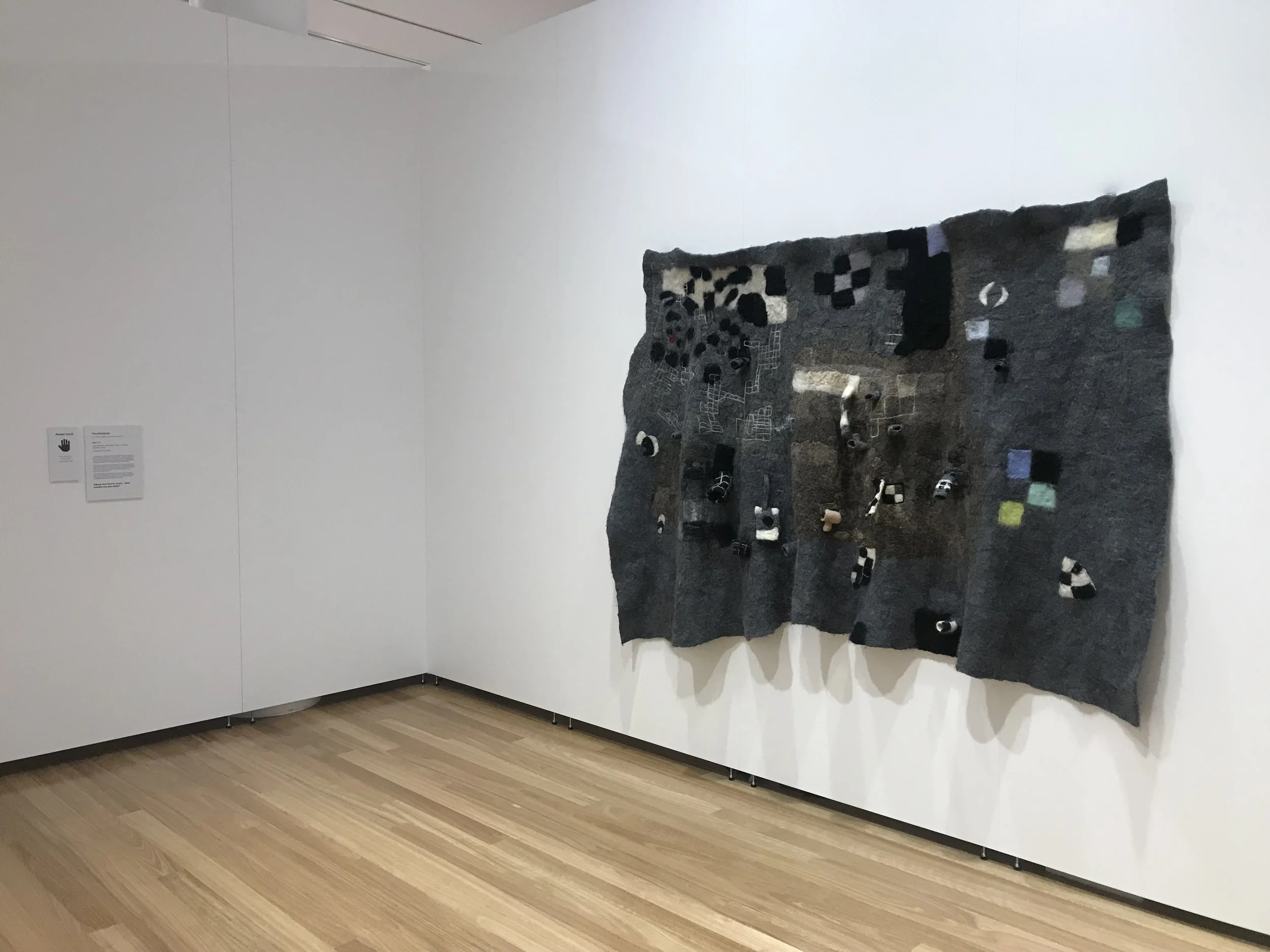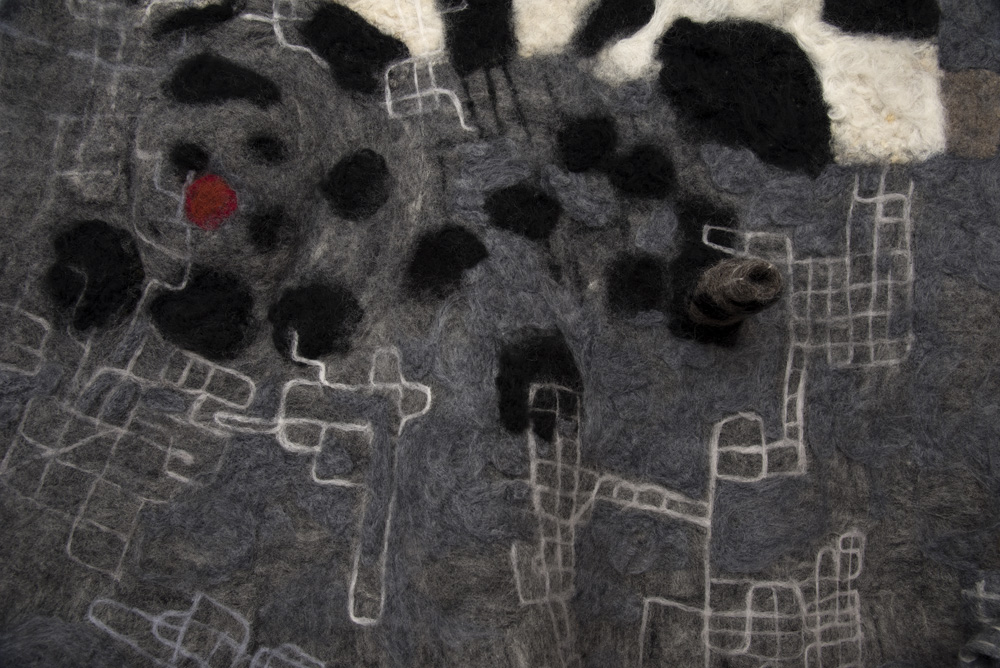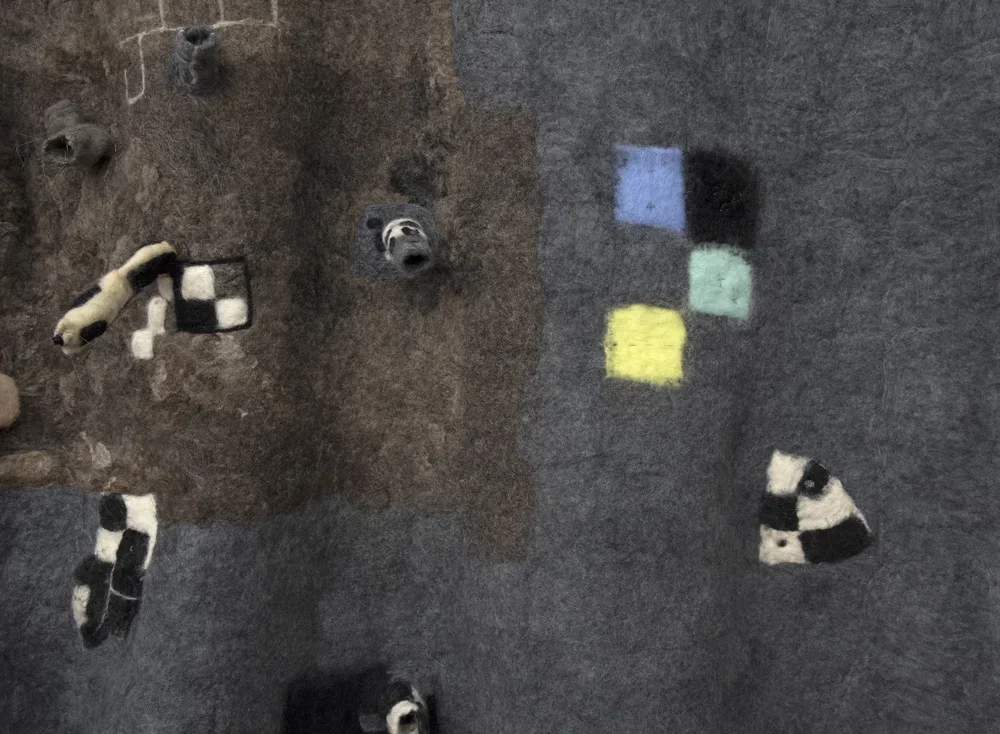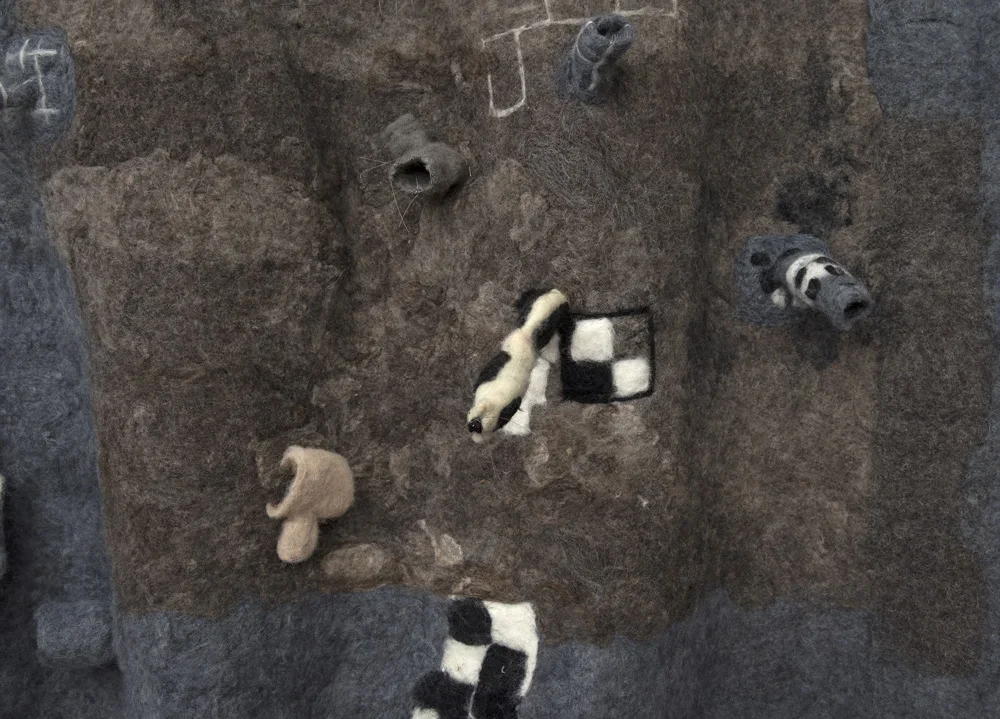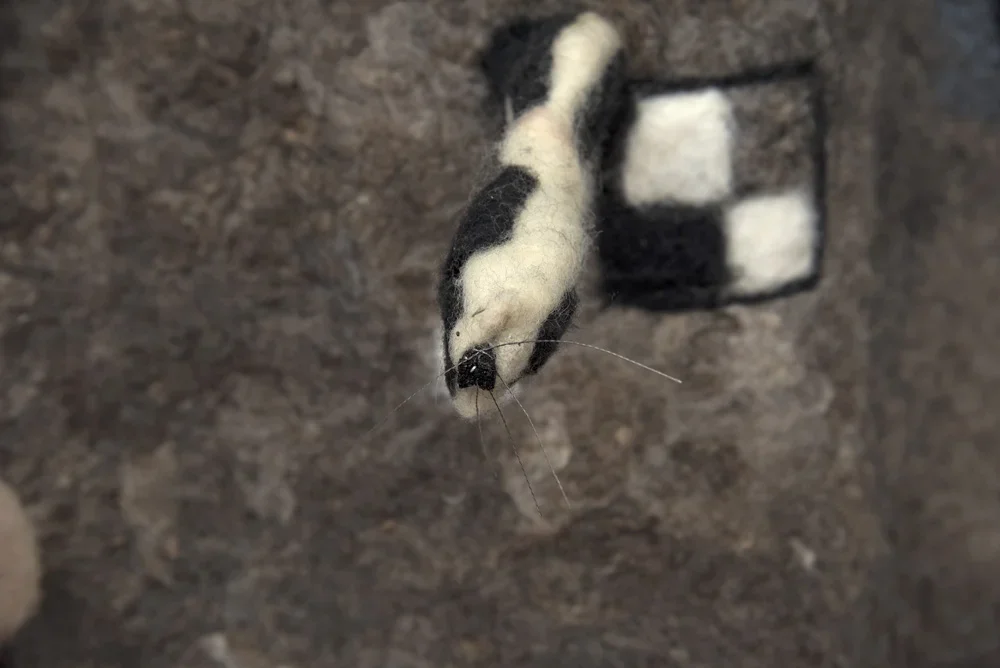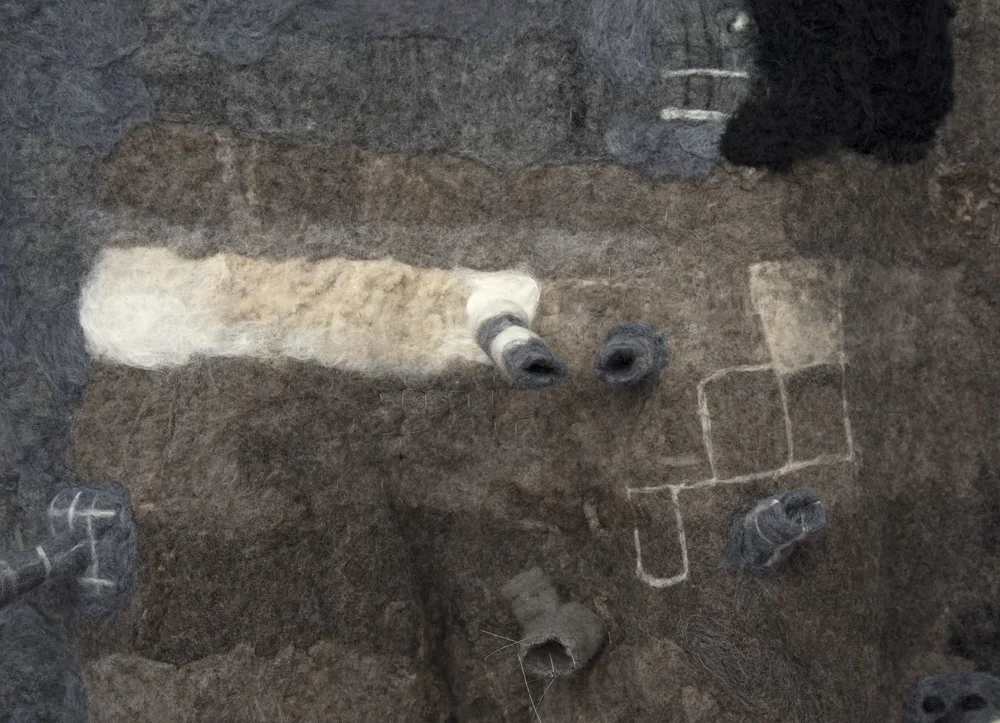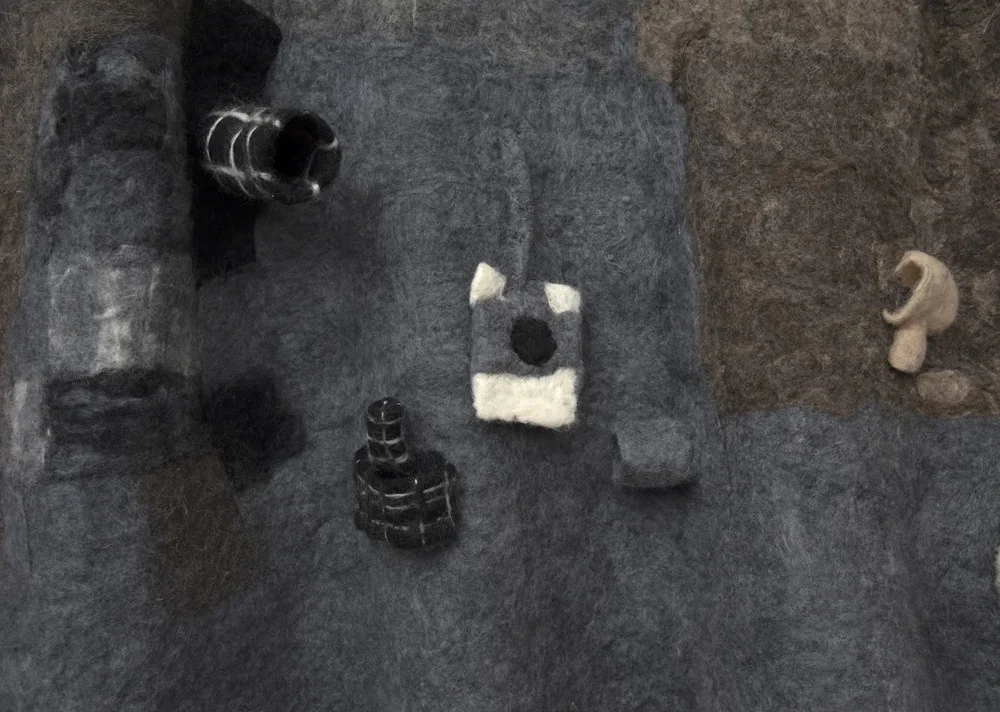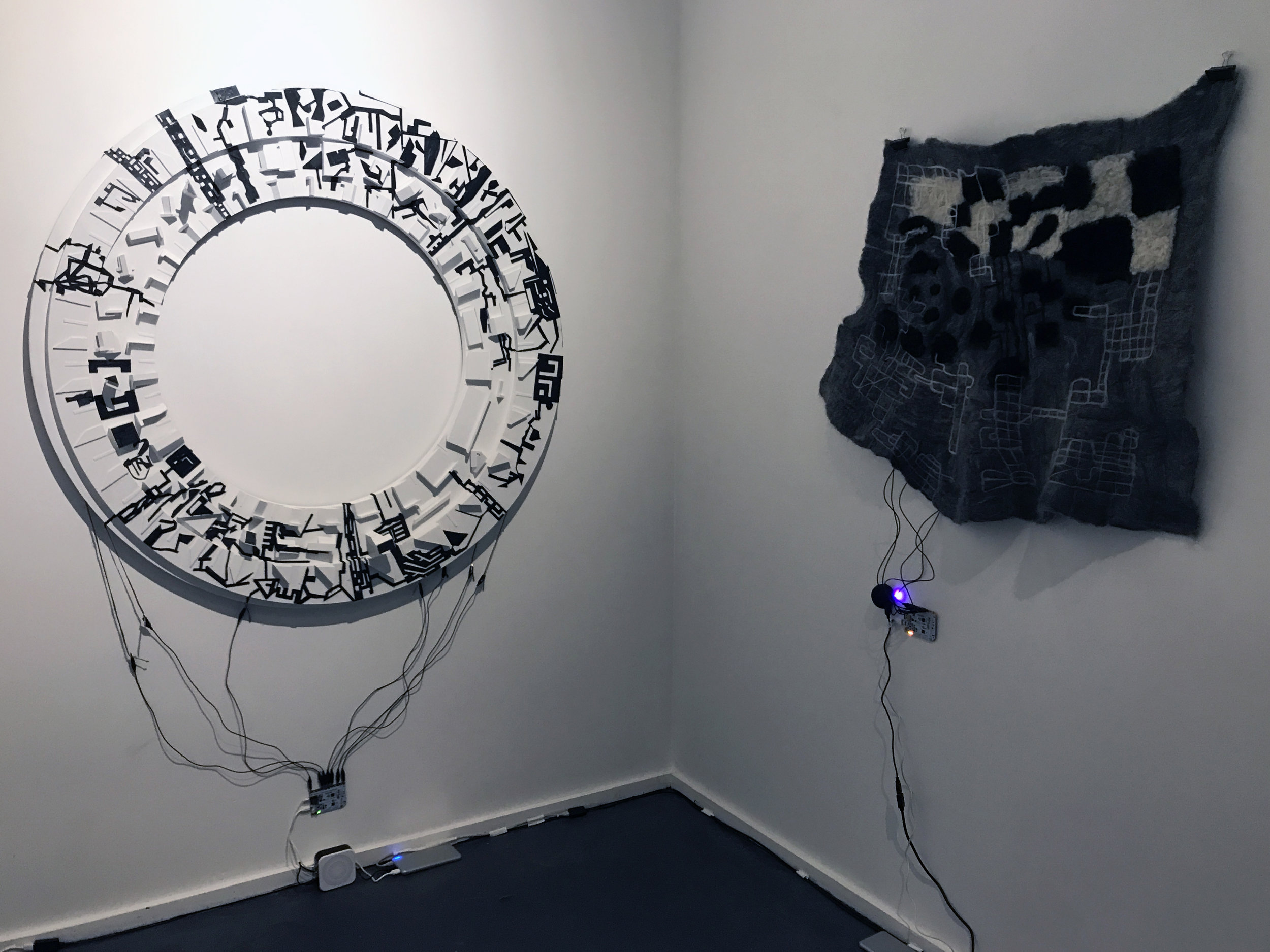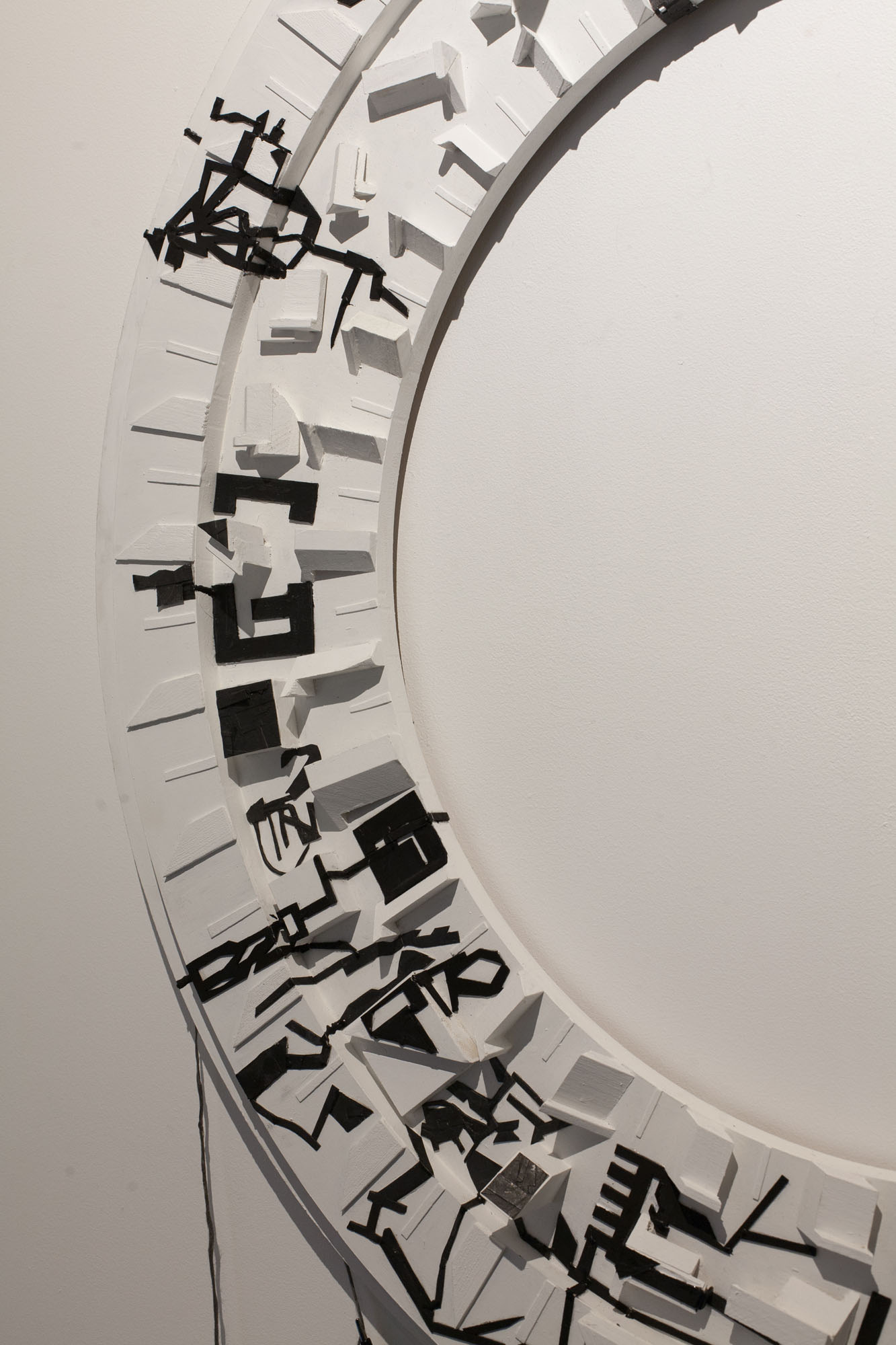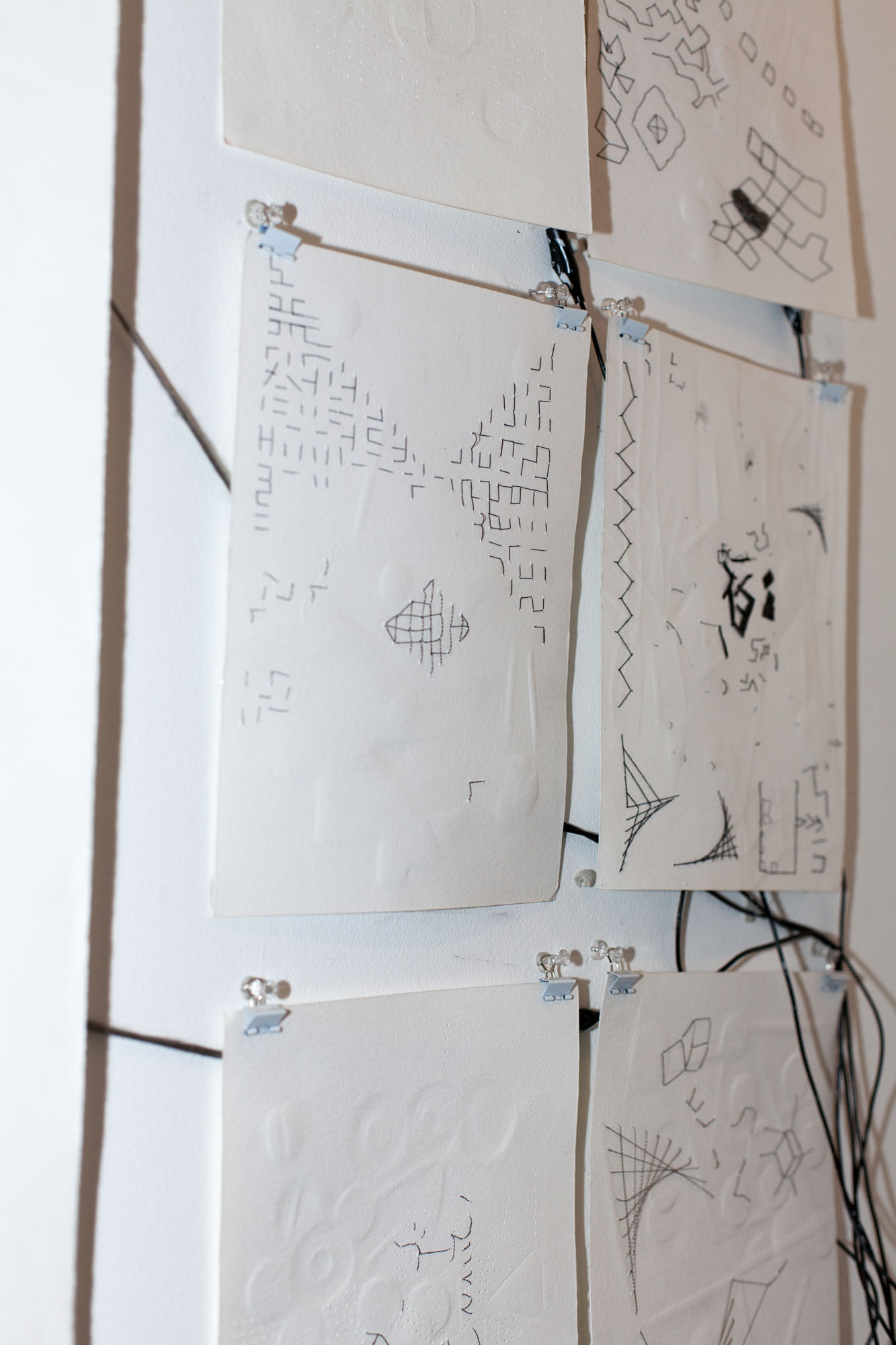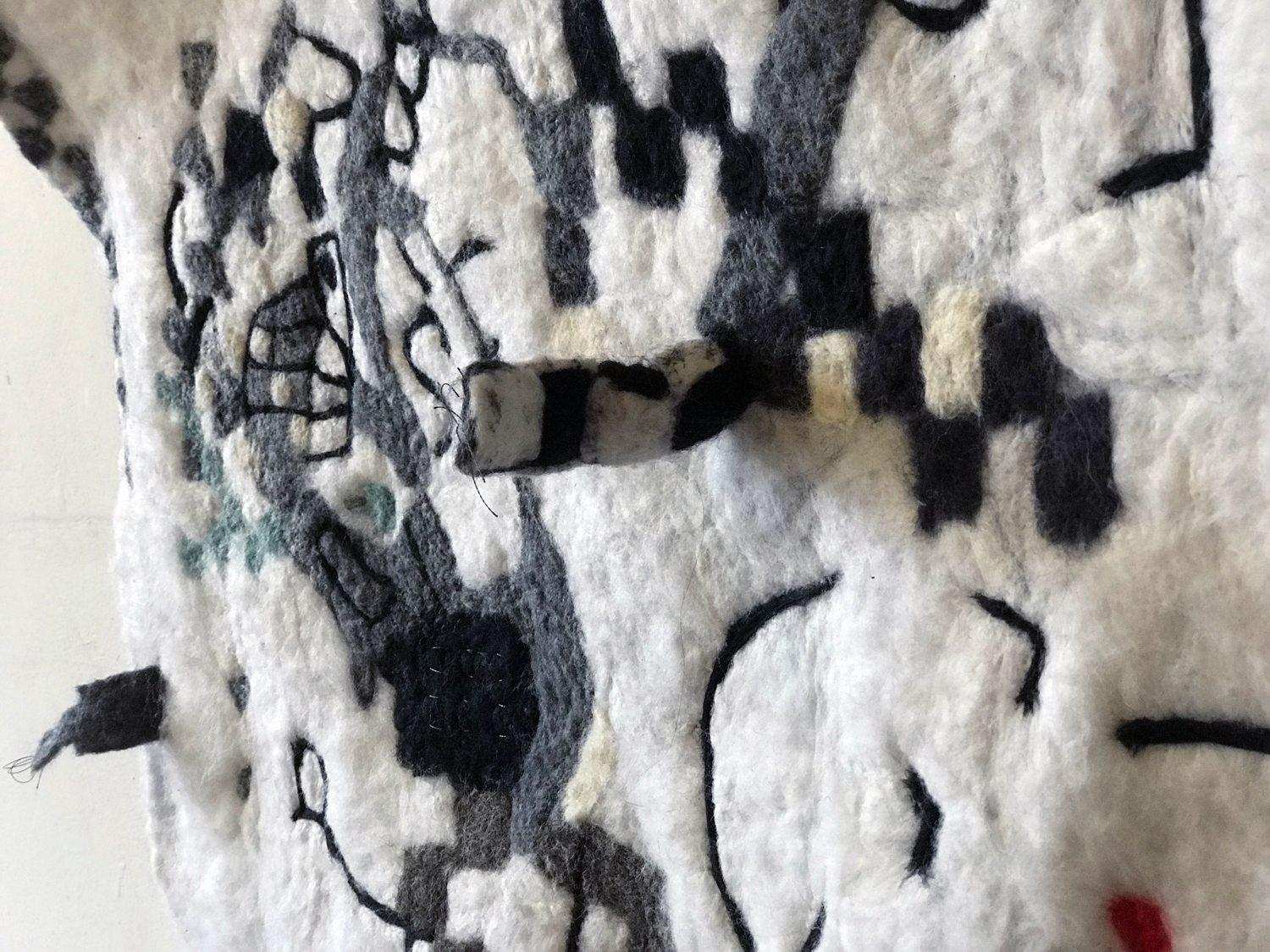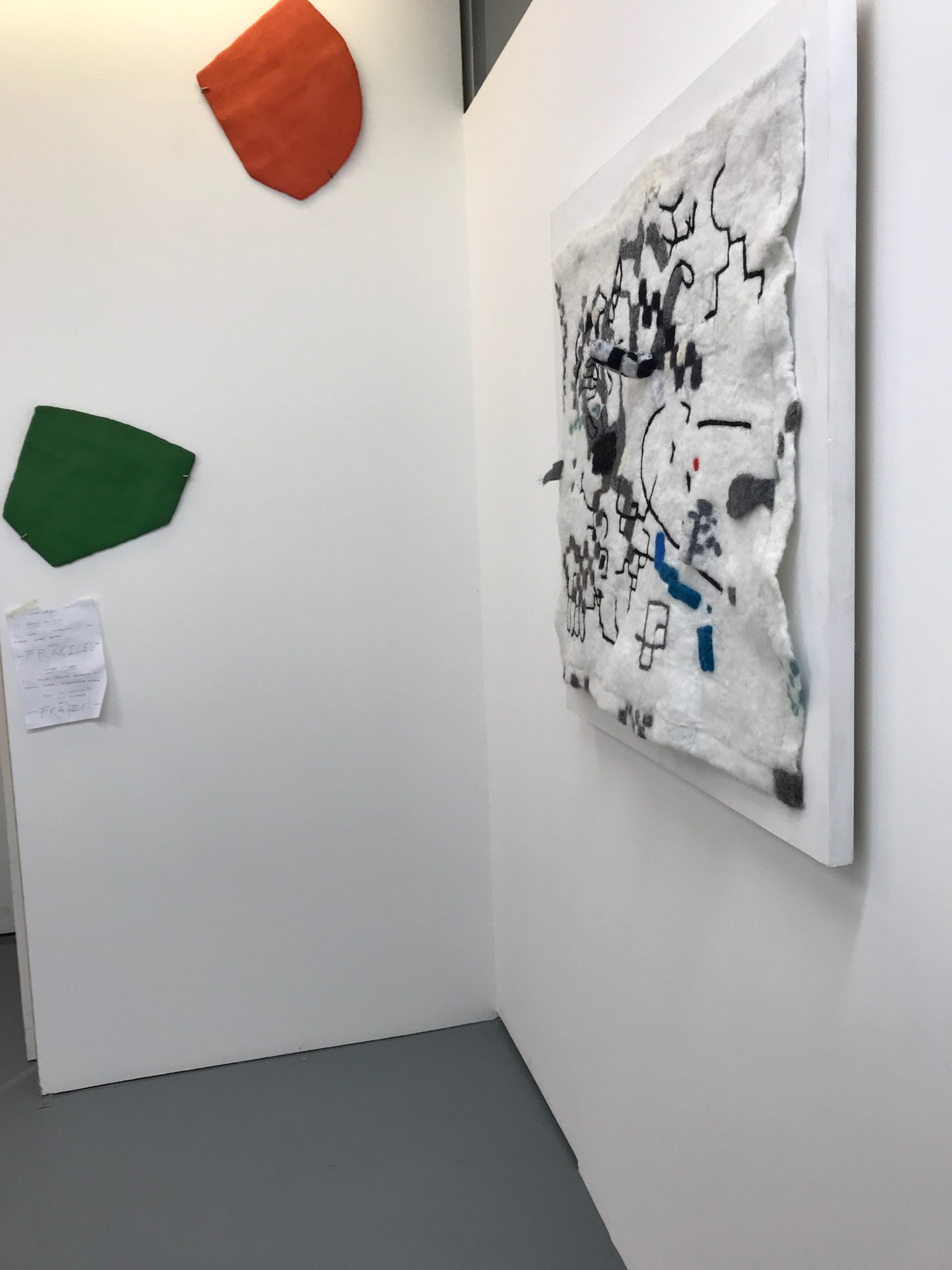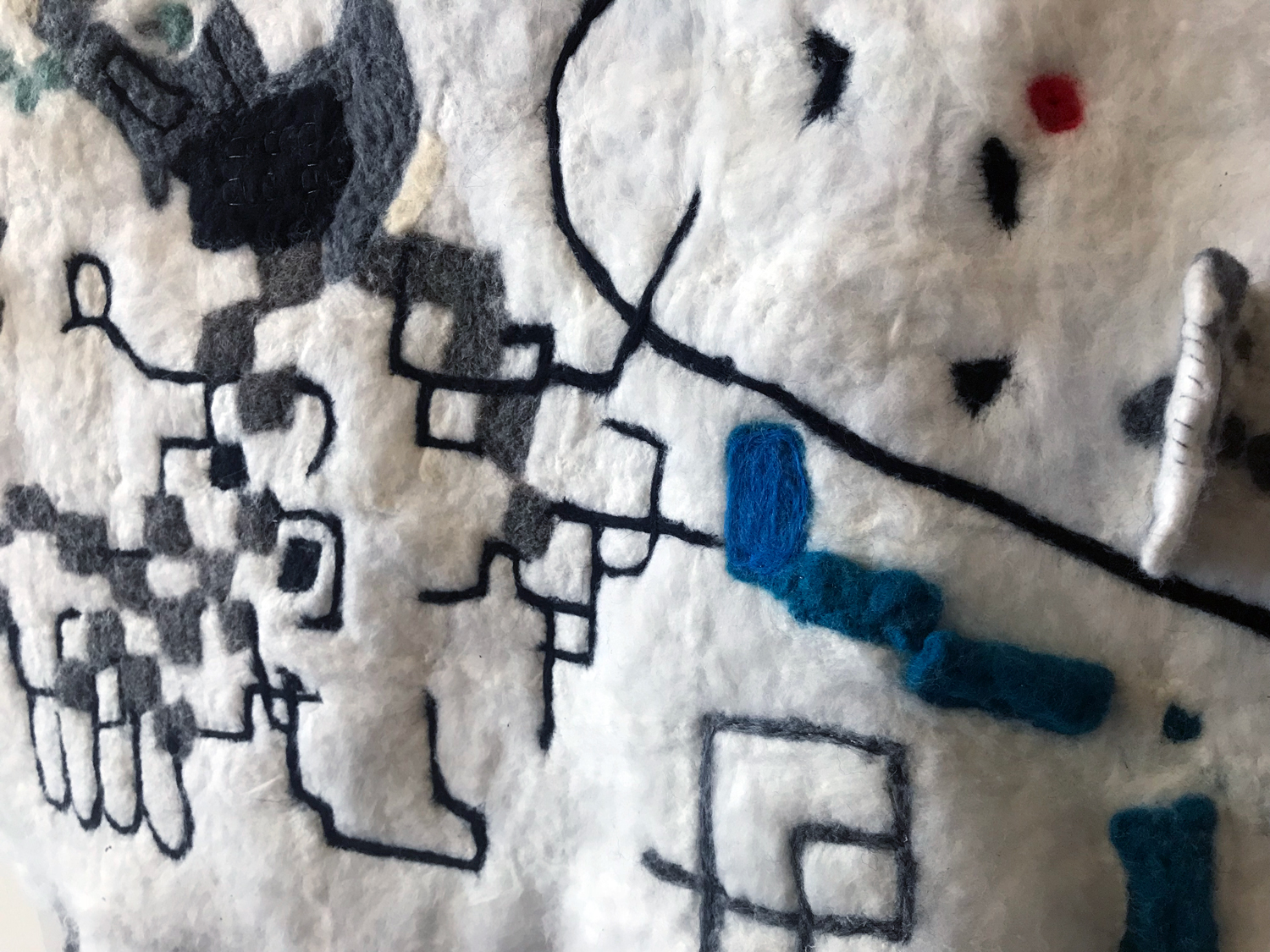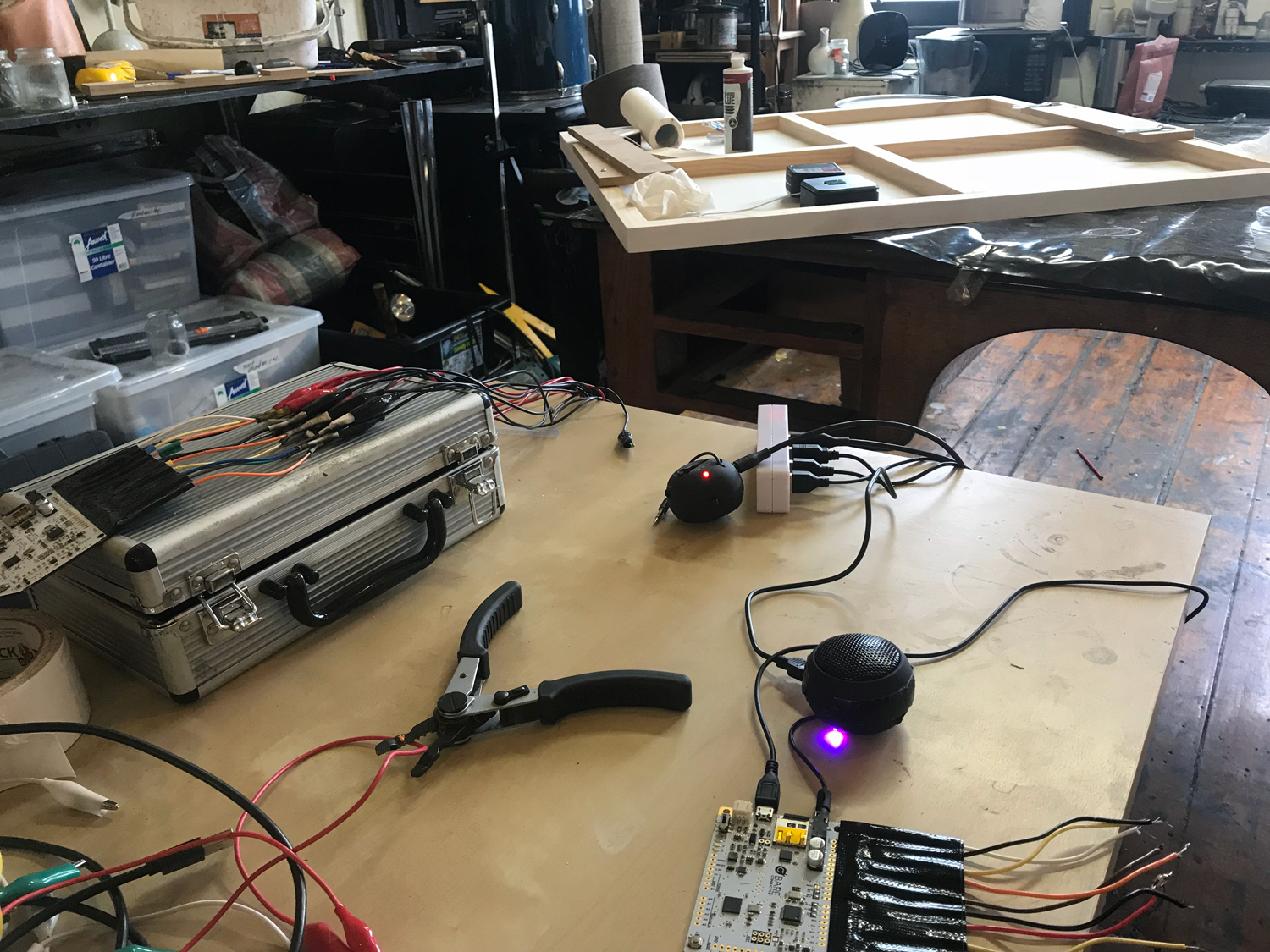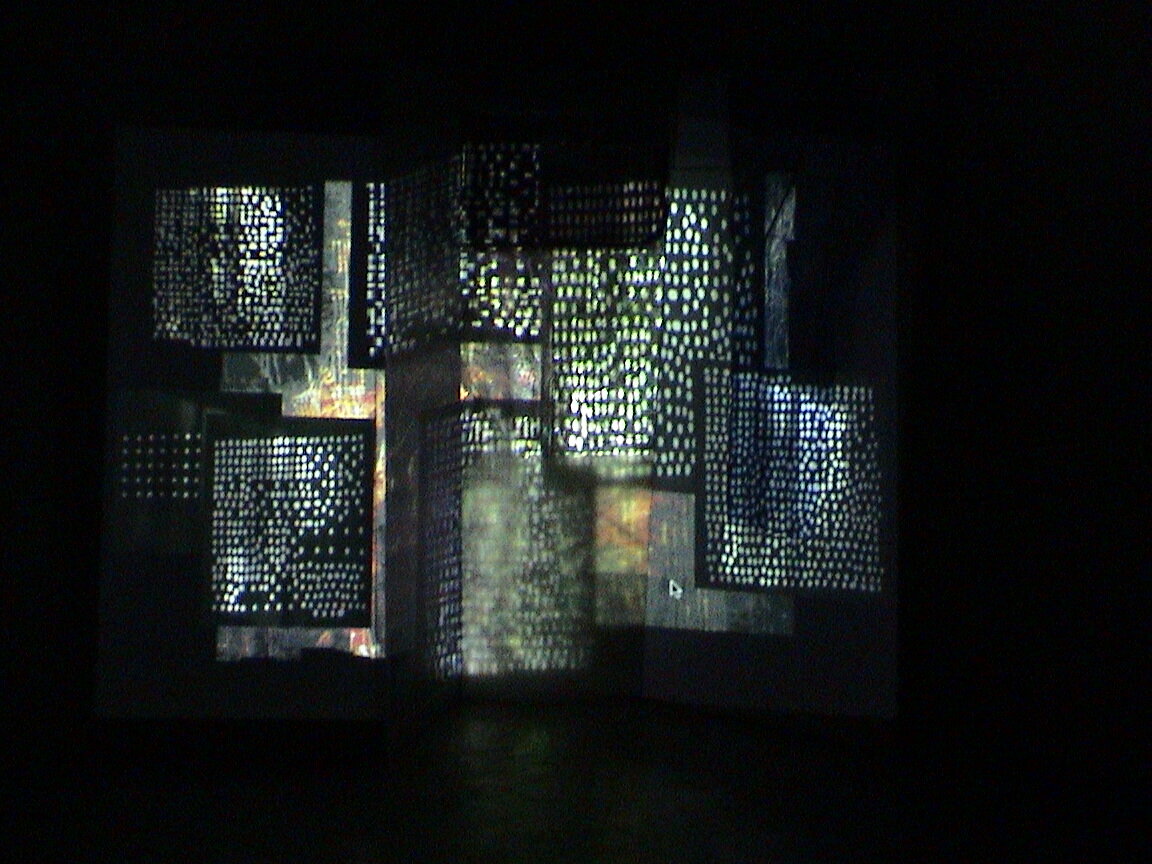Let's Play: The art of our time
Curator: Rodney James
Bunjil Place Gallery, Narre Warren
14 December 2017 - 25 February 2018
Contemporary neuroscience and cognitive brain theory, especially Embodied cognition, suggests that the minds not only connected to the body but also that the body influences the mind. Just as 60s Minimalism returned the body and sensory experience to the realm of art, so too contemporary neuroscience investigates the plasticity of the mind and it's ability to adapt and evolve. Tina Douglas's work in Let's Play takes cognition and brain function and turns it into a visual soundscape. Douglas's practice ranges from large monochrome paintings, that combine intuitive mark-making and the self imposed rule of the grid, free-hand drawings and improvised sound and video performances. The connection thread is the parallels that can be drawn between patterns and grids. and how information is reproduced and communicated through digital forms.
Felt, 2017 is an interactive wall work commissioned for Let's Play. In it Douglas engages physically, visually and aurally. People are drawm to touch the work through their attraction to soft, natural materials. Sensors trigger unexpected sounds and subtle vibrations upon touch. Douglas likens the work to a non-naturalistic terrain that allows participants to take any number of paths. Sounds are triggered bt proximity, broadness of strokes, and the depth and angle of touching. The triggers operate concurrently so that complex ;ayers of sound can evolve.
Douglas's work follows a long tradition of experimental sound performances by 20th century artists who used discordant sound patterns to create music based on random elements, breaking down the traditional division between the artist and the audience. In Felt, the soundtrack shifts and changes through the movement and position of the audience. Sound loops created by processing recorded sounds from the real world through computer programs foster a hybrid experience that is neither natural nor digital. Much like our everyday experiences, it lies somewhere inbetween.
Rodney James 2017
Let's Play: The art of our time, exhibit. catalogue, page 36.
Artists: Brook Andrew, Terry Batt, Polly Borland (UK/USA), Tina Douglas, Emily Floyd, Shaun Gladwell (AUS/UK), Claire Healy and Sean Cordeiro, Chayni Henry, Troy Innocent, Jess Johnson (NZ/USA), Jeff Koons (USA), Maria Kontis, Fiona McMonagle, Jan Nelson, Trent Parke, Patricia Piccinini, Robert Pulie, Nick Selenitsch, Tim Silver, Fleur Summers and Miwa Yanagi (Japan).
Images:
Tina Douglas, Felt 2017 Wool, stainless steel fibre, micro controllers, speakers, sound. 260 x 140 cm
node
20 July - 12 August 2017
ALTERNATING CURRENT SPACE, 248 High Street, Windsor, Victoria
Repurposed materials operate two, three and sound dimensionally in Node. Painted and drawn elements shift to become controllers, joysticks, buttons. Painting, embroidery, natural surfaces trigger digital events jarring the viewer's relationship with traditional materials and displacing the viewer's expectations.
Node is an experiment which attempts to build on my sound performance and visual practice which have mainly remained separate.
Tina Douglas 2017
Images: Rim 2017 Latex paint on found wood, stainless steel fibre, micro controller, speaker. Dimensions variable (ring 114 x 114 x 4 cm), Felt 2017, Merino wool, stainless steel fibre, micro controller, speaker . Dimensions variable (felt piece 33 x 74 cm), Thread 2017, Fingernail burnished, pin pricked cotton rag paper, stainless steel fibre, micro controller, speaker. Dimensions variable
Five Walls Projects
April 25th - May 12th 2018
Five Walls Gallery 1 & 2 and Arcade
suites 2, 3, & 4, level 1 / 119 Hopkins St, Footscray
ABSTRACTION TWENTYEIGHTEEN is an initiative showcasing Abstract and Non-Objective art: one exhibition, over one hundred artists, hosted by five Melbourne exhibition spaces. Each venue has selected works that demonstrate its particular curatorial practice and aesthetic, with artists from around Australia working in various in materials and formats. Such diversity reflects the range of contemporary artistic interest in Abstract and Non-Objective art. Practitioners with decades of experience and recent graduates celebrating its innovative vitality, its freshness and longevity.
In 1968, the National Gallery of Victoria – St Kilda Road, opened. A major architectural and cultural emblem, highlighting the maturity and strength of the Victorian and Australian burgeoning artistic ambition.
The Field, an exhibition of Abstract art that affirmed the aspirations of Australian art in an international context, was significant to the opening of this new cultural institution. The built form of the NGV is ‘modernist sombre’ and restrained, while The Field was exuberant, high energy and excessive in presentation–a magnificent balance.
In 2018, the NGV celebrates 50 years in St Kilda Road with The Field Revisited. It is more than a restaging of the breakout exhibition; it is a retelling of a great moment in a long story.
ABSTRACTION TWENTYEIGHTEEN is complementarity with The Field Revisited and its precursor. The works in the exhibition reflect on a deeper history than just post/modern moments and sensibilities. The show reveals influences and derivations, progressions and grand re-examinations of artistic cul-de-sacs. All manner of aesthetic polemics and political postures are reified and re-contextualized to make and mark works that advance the action beyond novelty of the new.
Stephen Wickham. 2018.
Artists exhibiting at Five Walls include:
Aaron Martin, Adrian De Giorgio, Adrian De Vries, Andrew Gutteridge, Annelies Jahn, Barbara Halnan, Chris Packer, Craig Easton, Donna Comfort, Emma Beer, Graziela Guardino, Ian Wells, Karen Wells, Kubota Fumikazu, Leah Teschendorff, Magda Cebokli, Max Lawrence White, Merryn Trevethan, Nancy Constandelia, Patricia Todarello, PJ Hickman, Raymond Carter, Rebecca Monaghan, Rohan Hartley Mills, Rox De Luca, Sally Tape, Shaun O'Connor, Shelley Jardine, Simon Degroot, Stephen Wickham, Tania Alexander, Tina Douglas, Troy Innocent, Wilma Tabacco
Tina Douglas fuzzy logic 2018, hand felted wool, stainless steel fibre, micro controllers, speakers, sound, painted ply, 91 x 91 cm
Images: Tina Douglas fuzzy logic 2018, hand felted wool, stainless steel fibre, micro controllers, speakers, sound, painted ply, 91 x 91 cm
betaversionpack and betaversion 4.2 2001 - 2004,
betaversion were a series of interactive image experiments with sound I conducted during 2001 -2004.
The experiments involved a data projector, computer, infrared mouse, stretched canvases with prepared reflective surfaces, triggered recorded sounds. The audience activated and triggered visual animations and recorded sounds via a mouse. The projected images bounced off the various reflective surfaces in different ways creating a kind of depth of field experience. The stretched canvases were arranged upright at various positions to create different "planes" for the projection to project on to.
The betaversion experiments were first inspired by experiments with real-time digital painting at Pinacotheca gallery, Melbourne in 2001 which used a digital projector, computer, infrared mouse, Photoshop and VR programs. Experiments at my flat also contributed at the time as it had lots of doors I could open or shut to different rooms and first demonstrated to me the idea of projecting on to physical surfaces and planes to create a visual space I was interested in.
Images: betaversionpack, Melbourne Fringe Festival, Studio 15, Abbey Studios, Richmond, Melbourne 2003, betaversion 4.2, First Site Gallery, RMIT University, Melbourne 2004, Pinacotheca and East Melbourne experiments 2001













